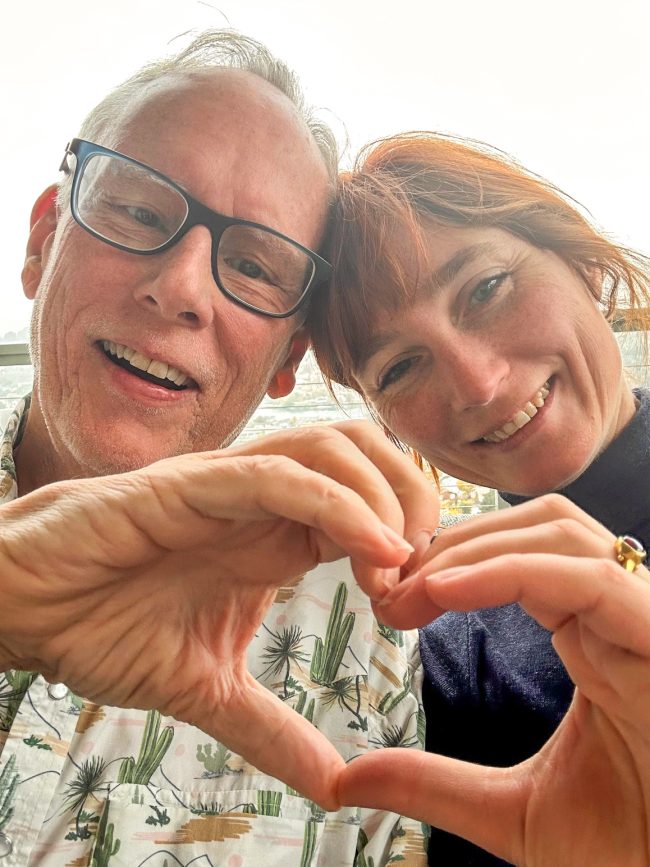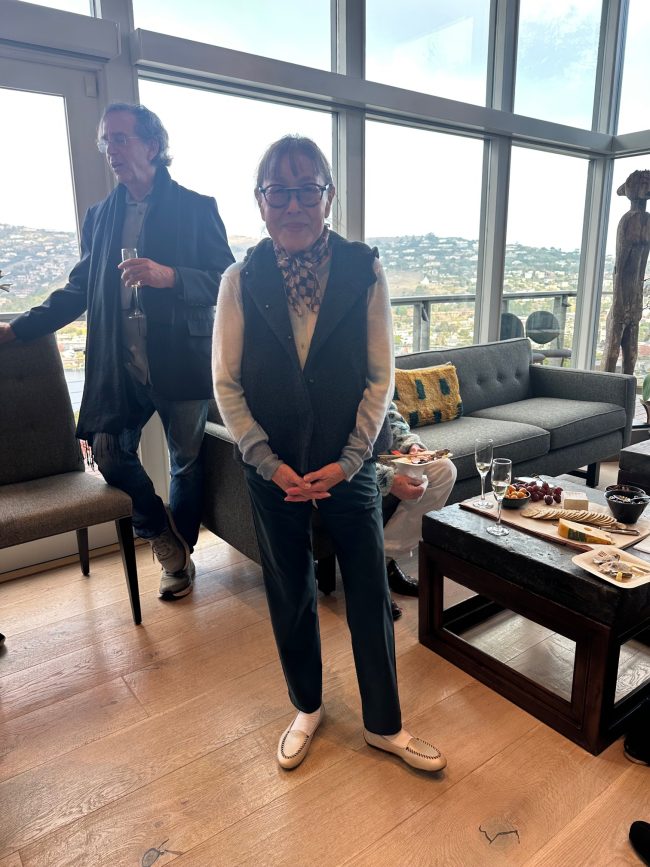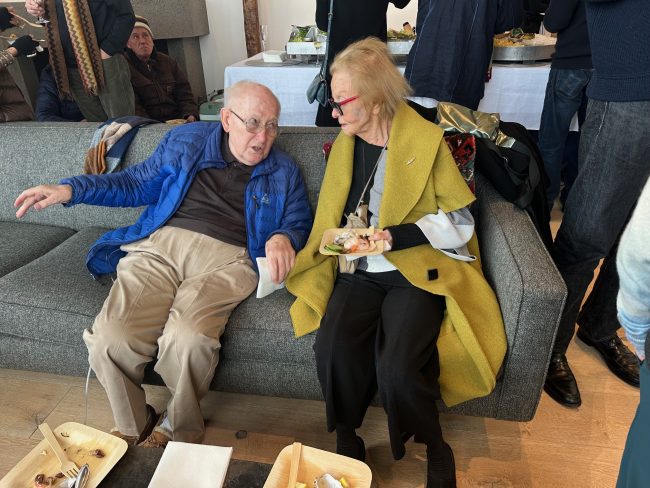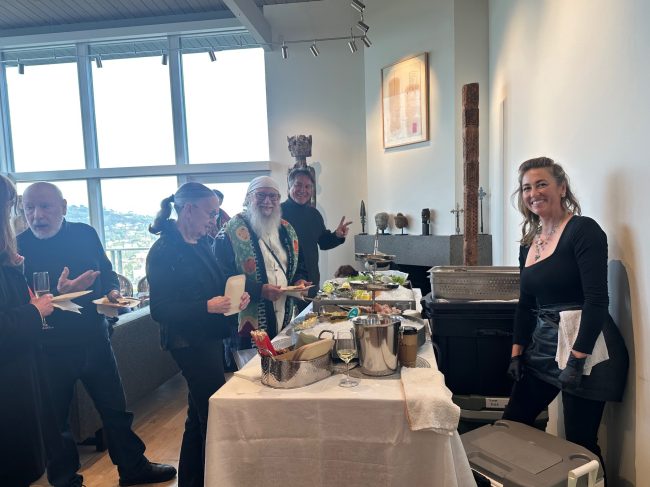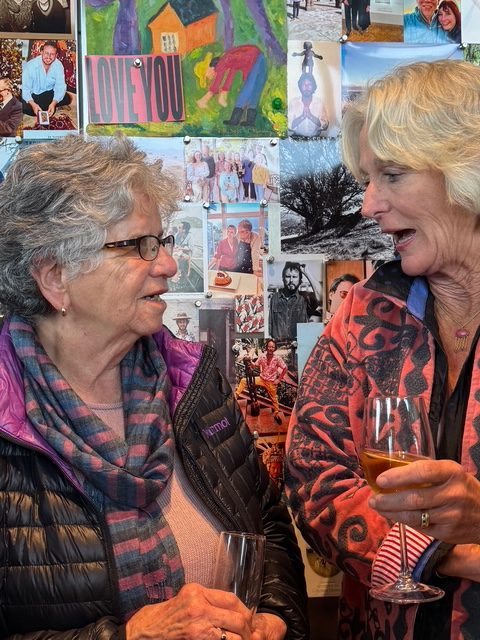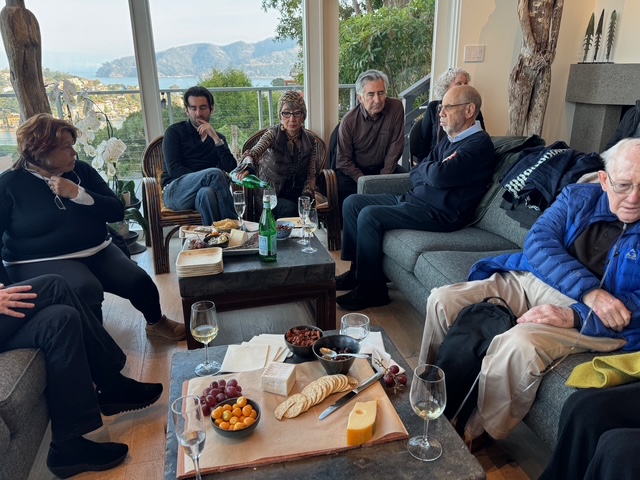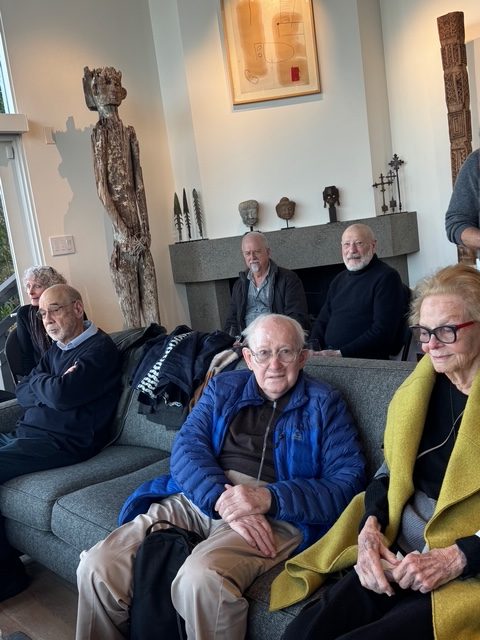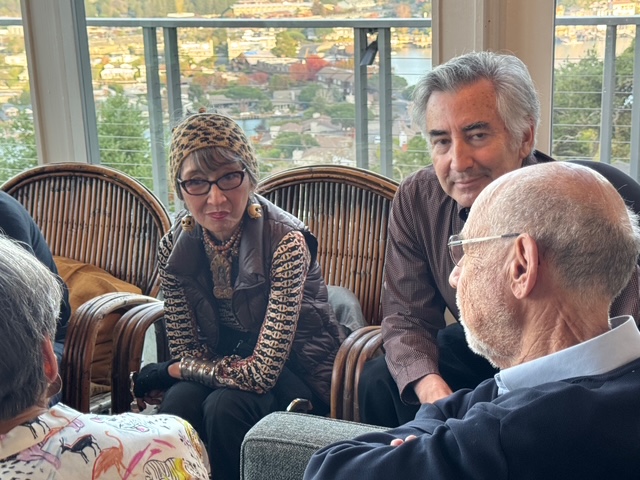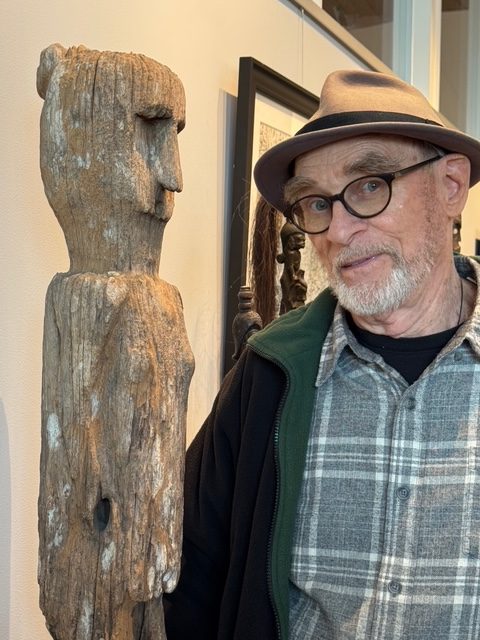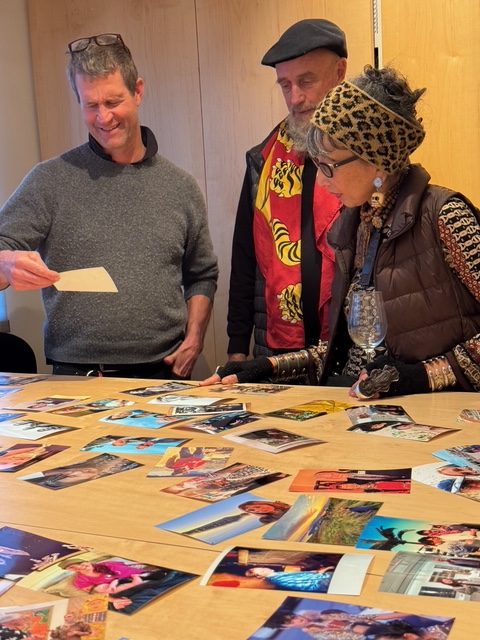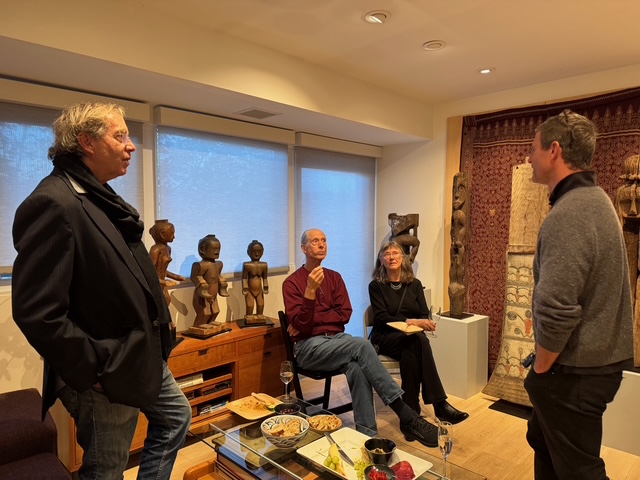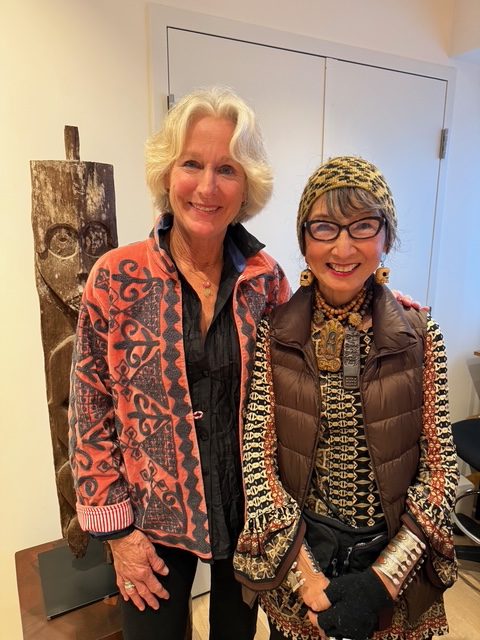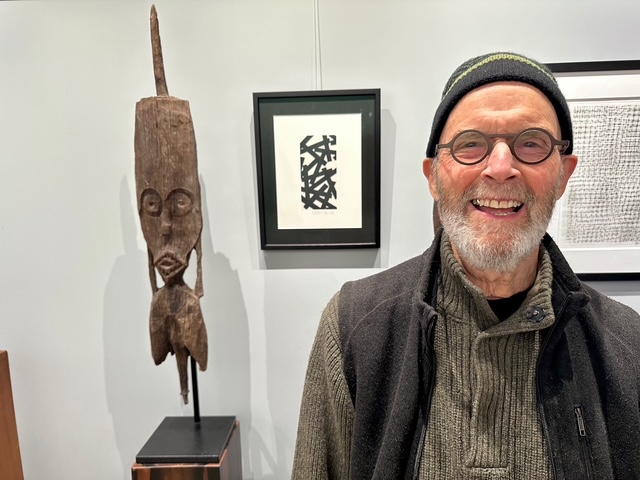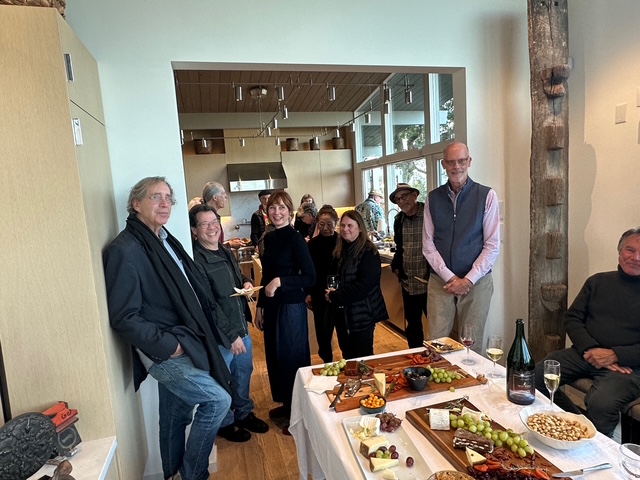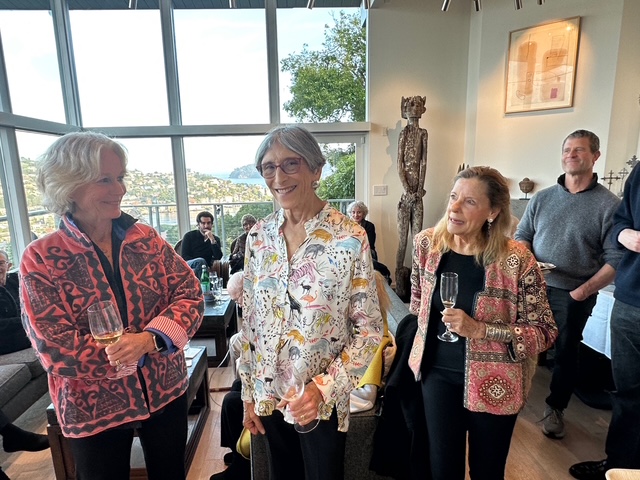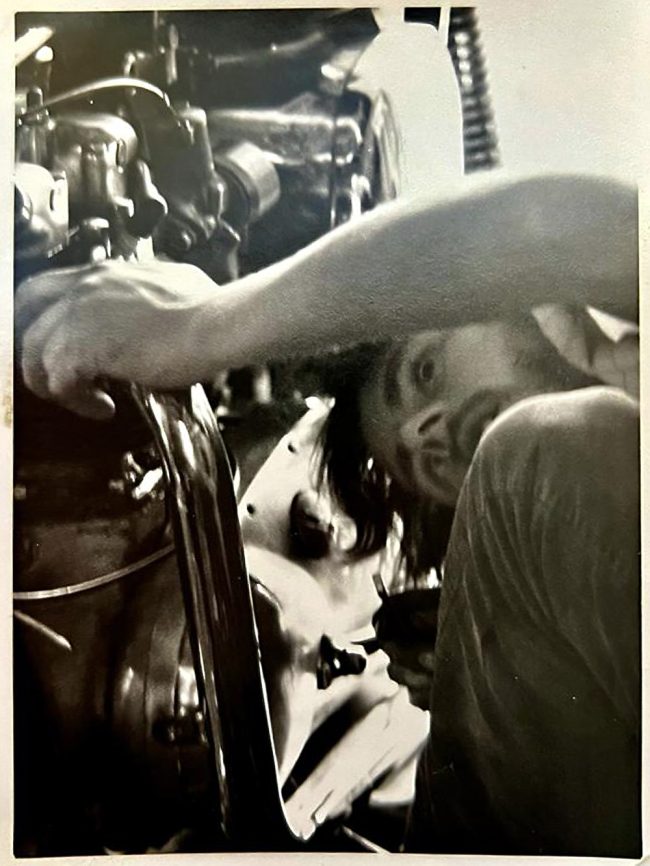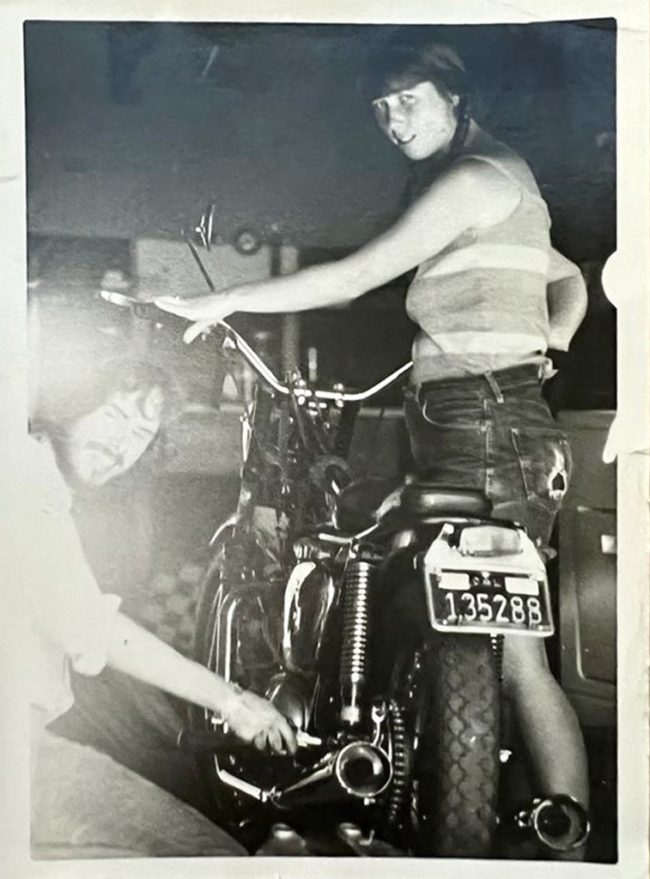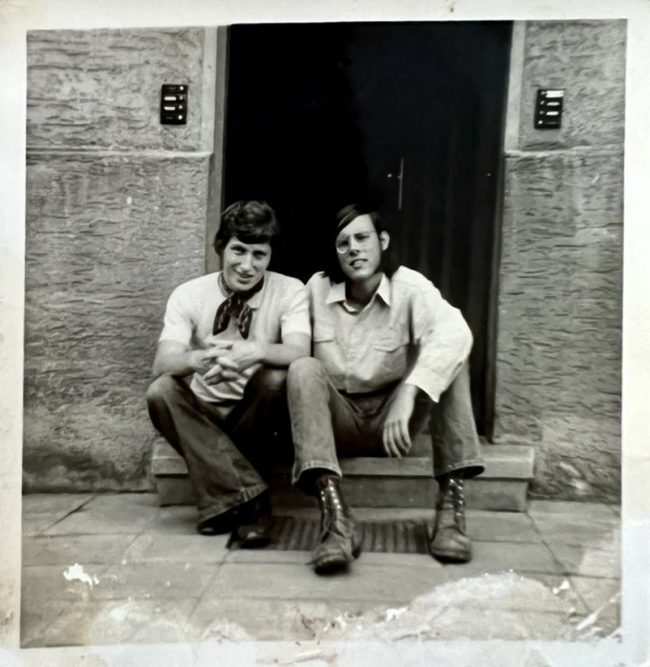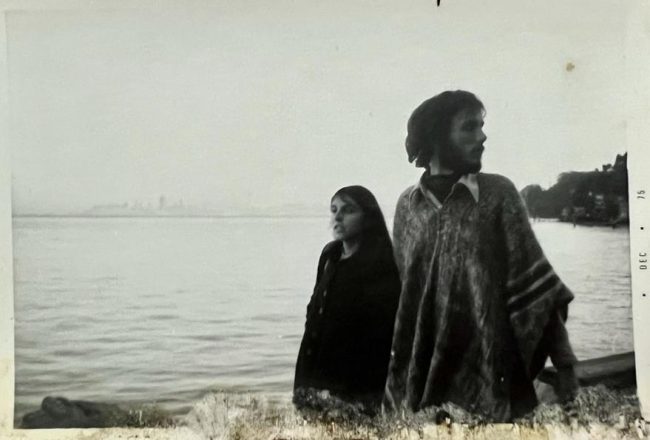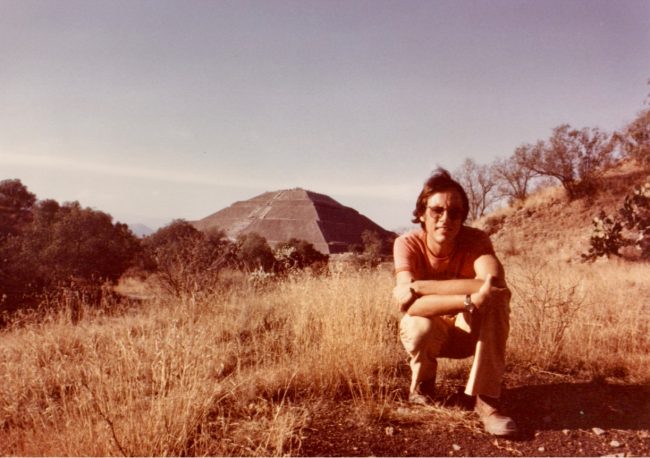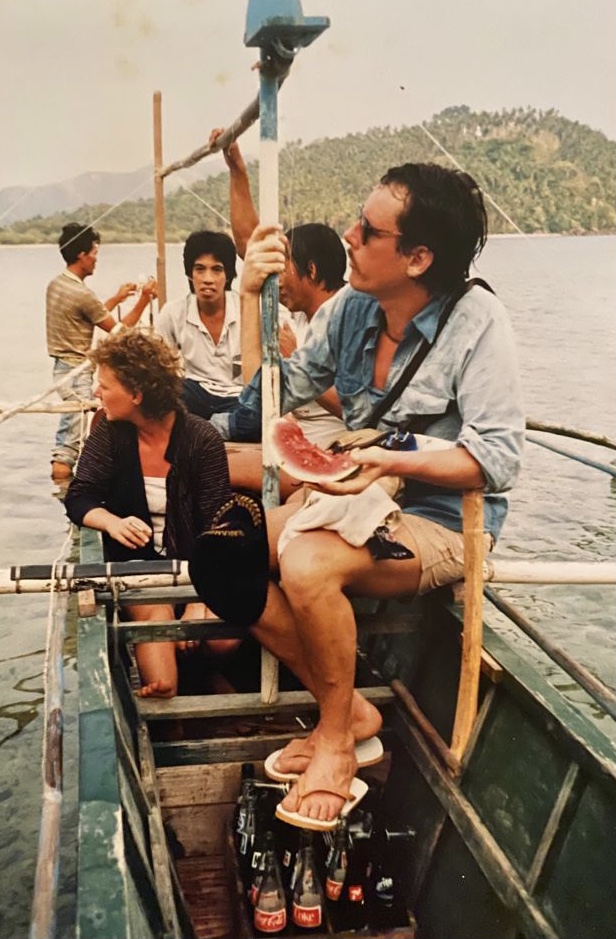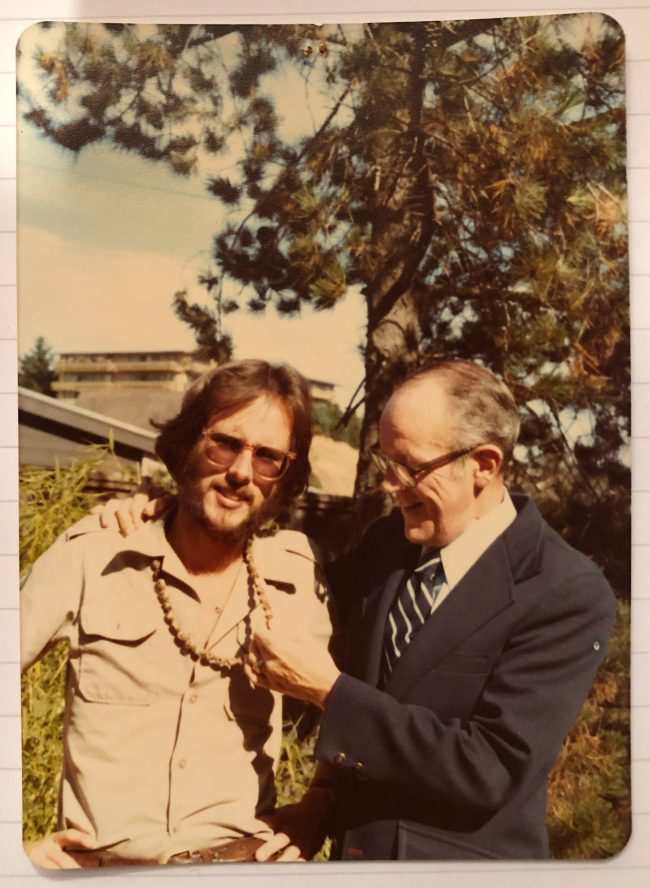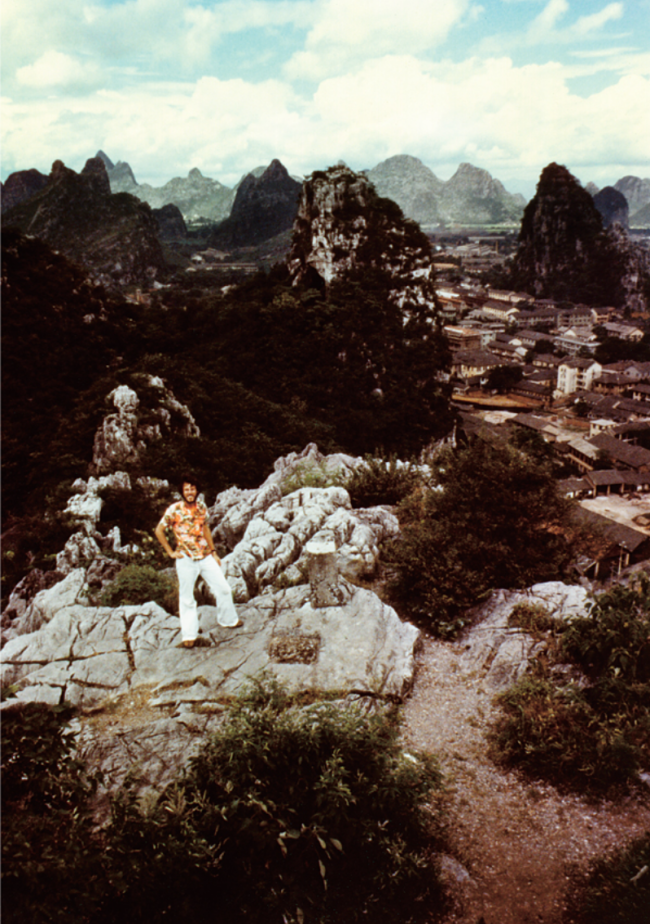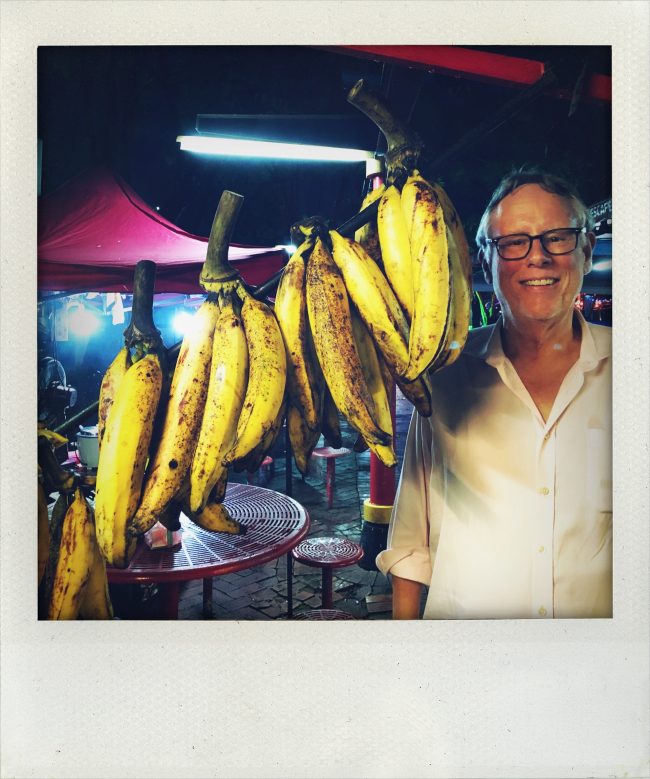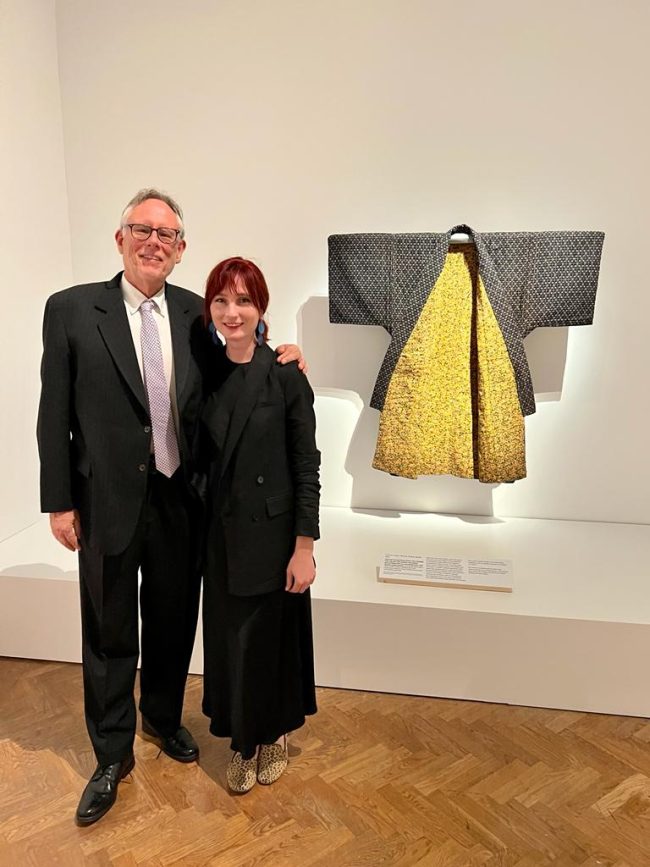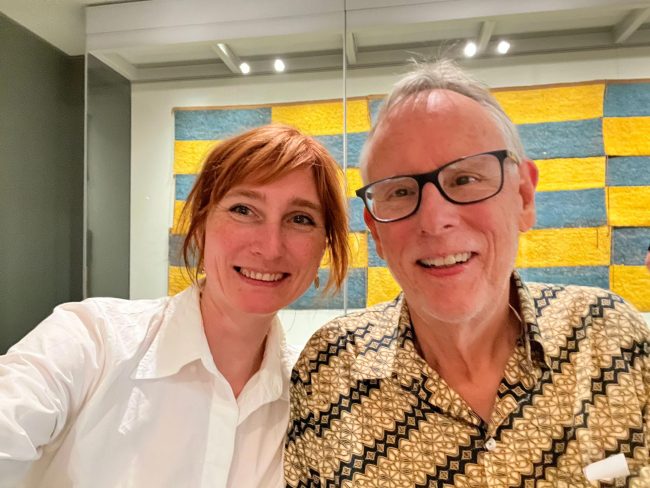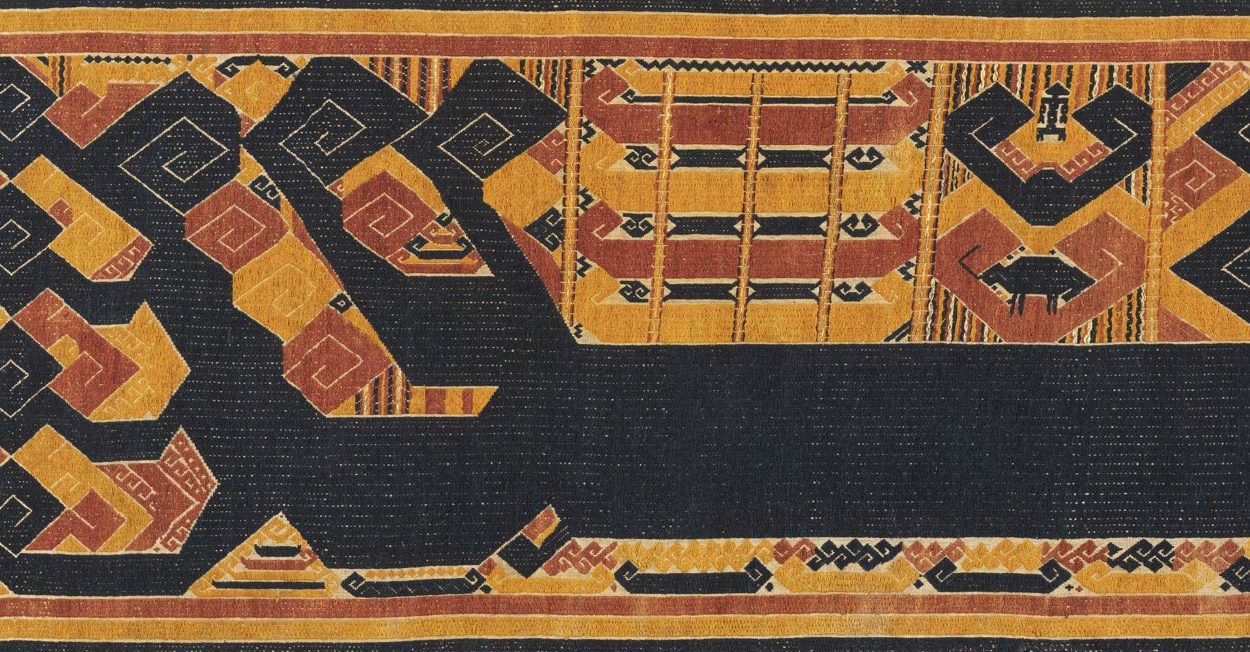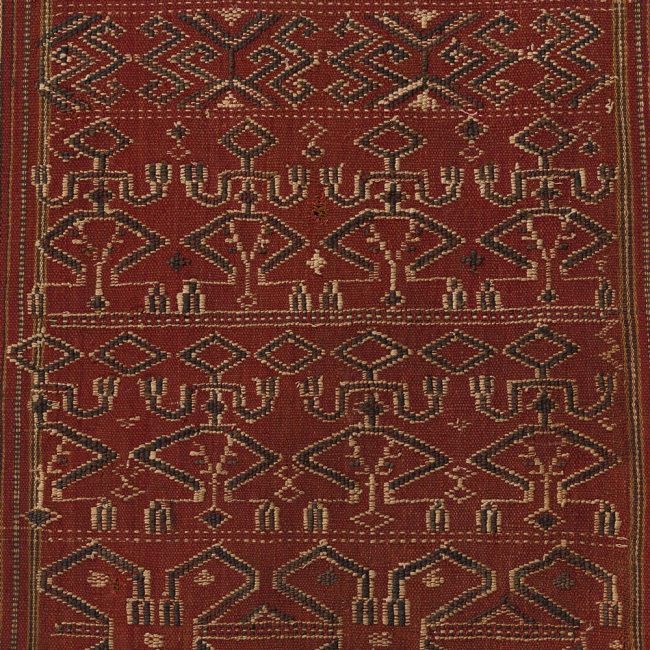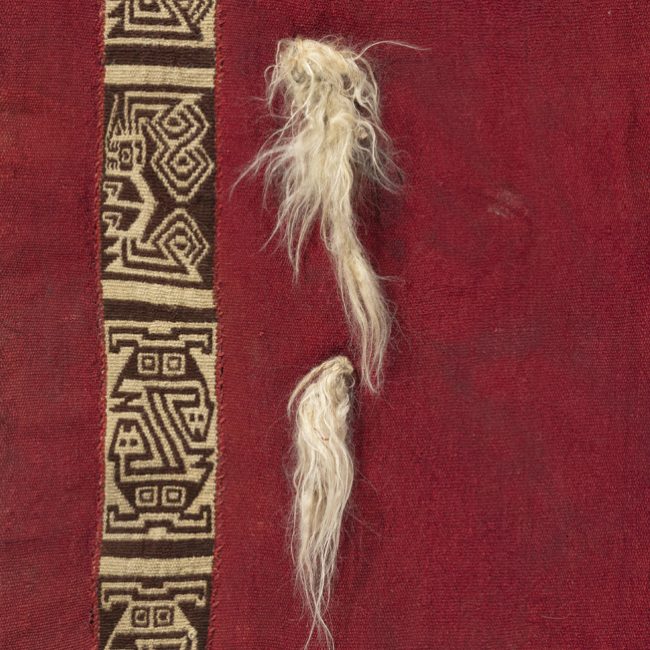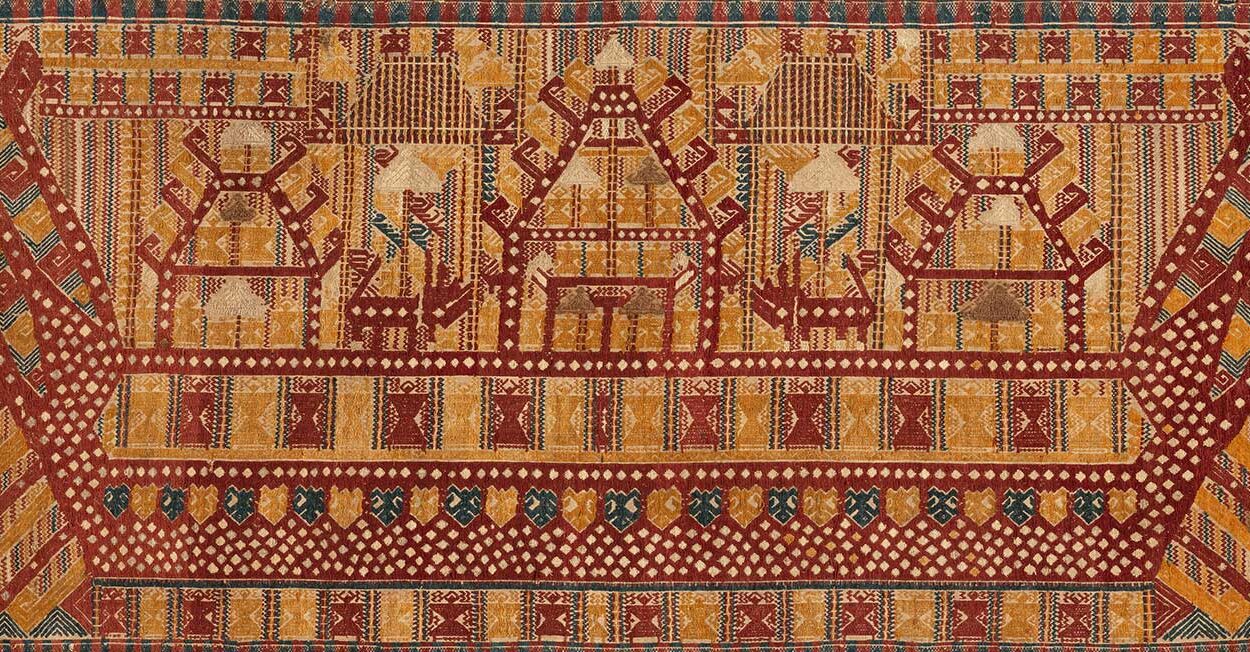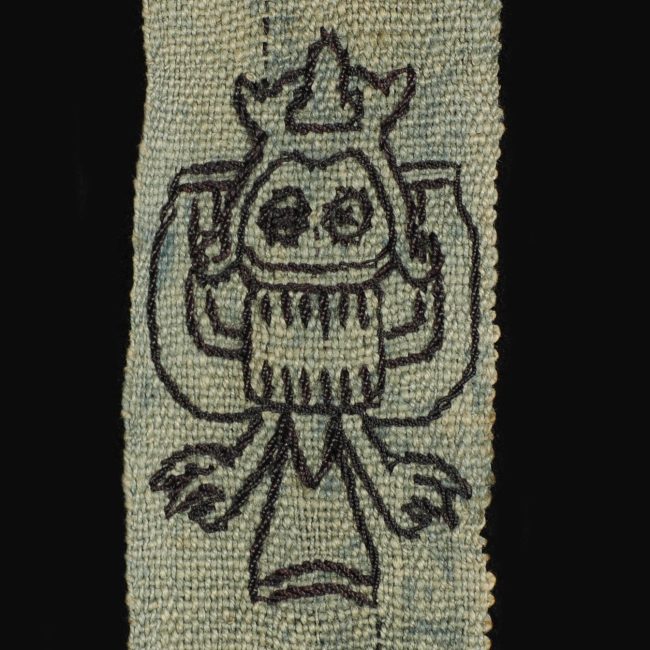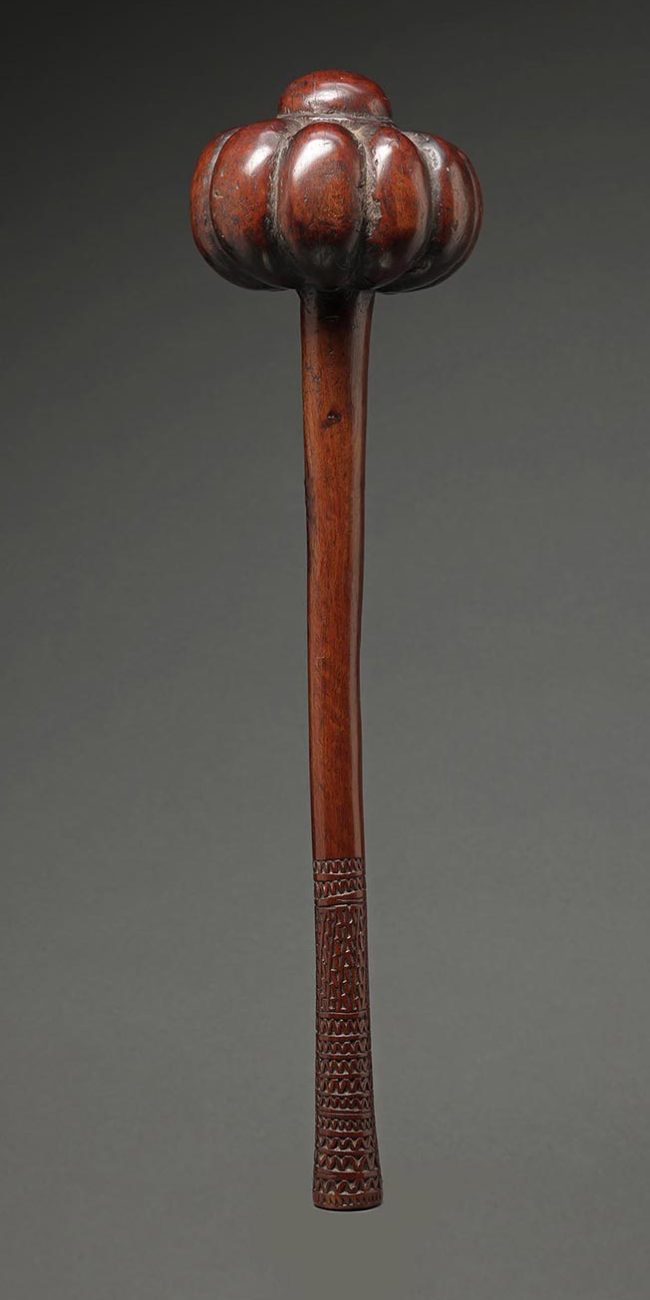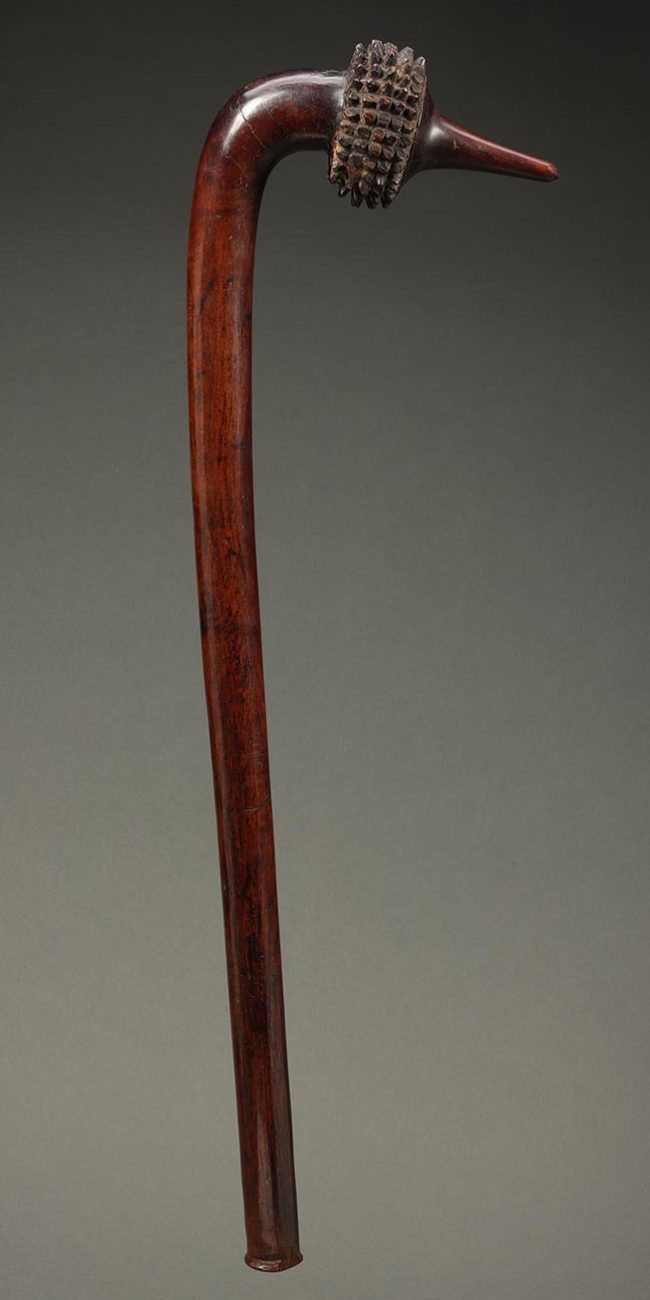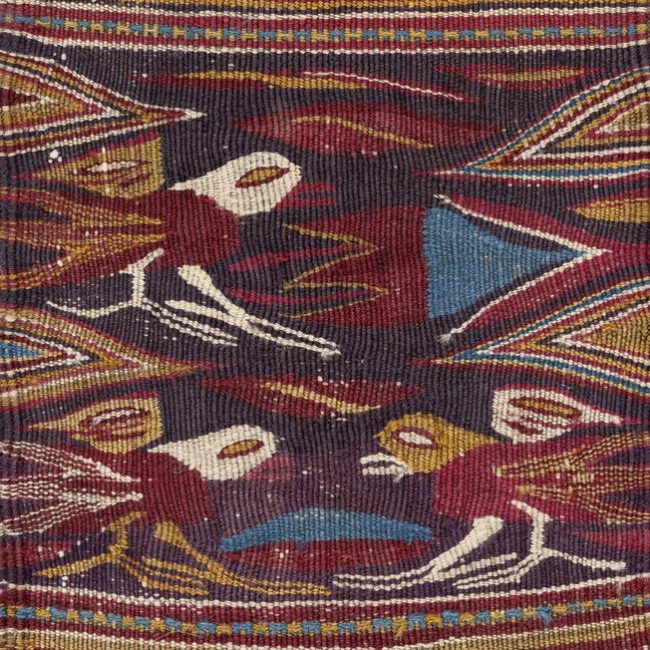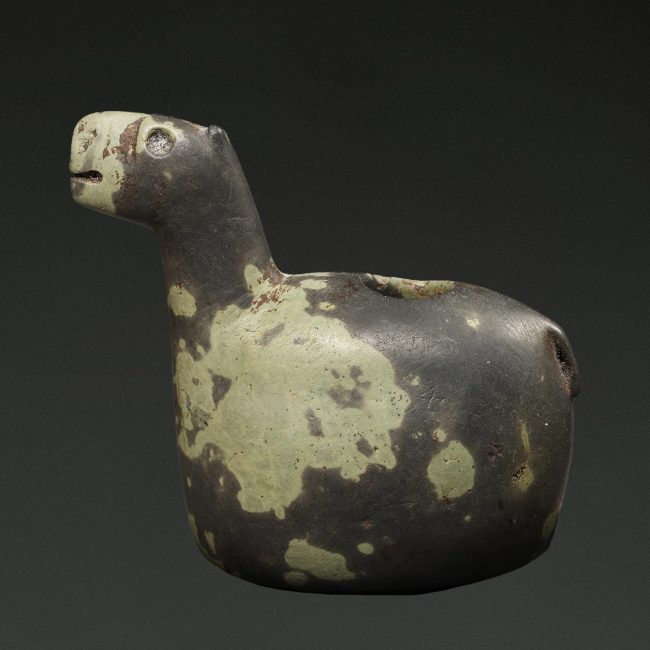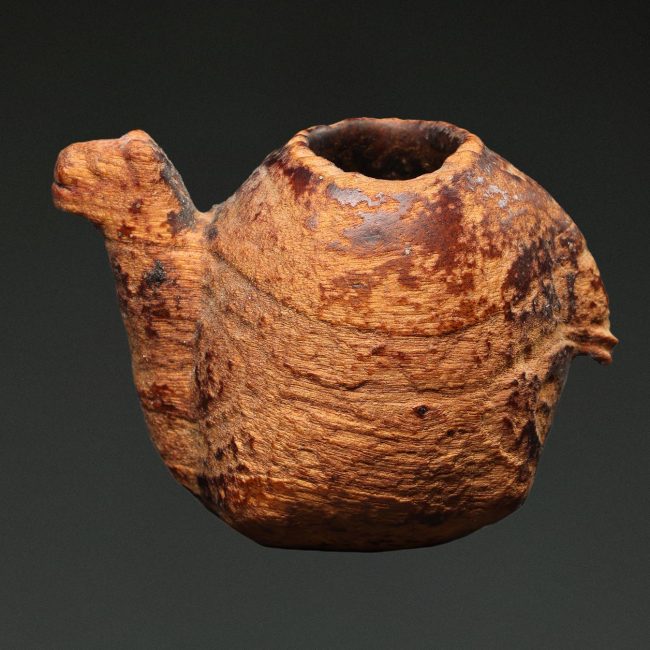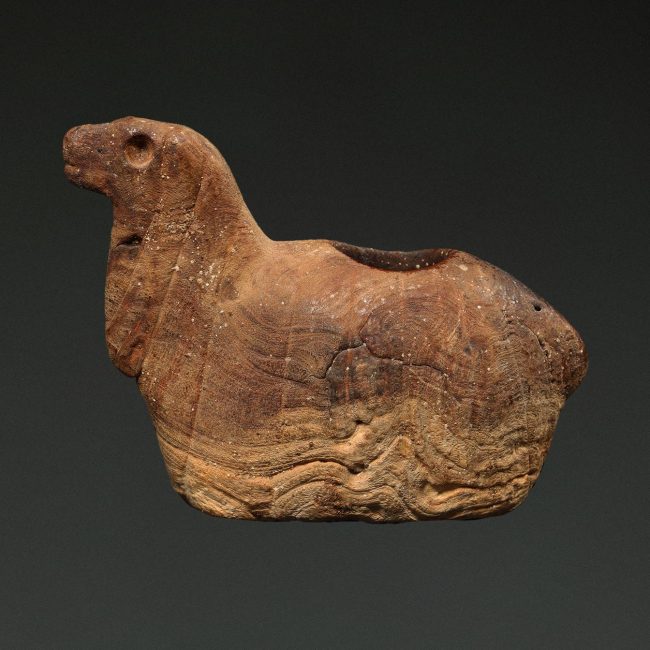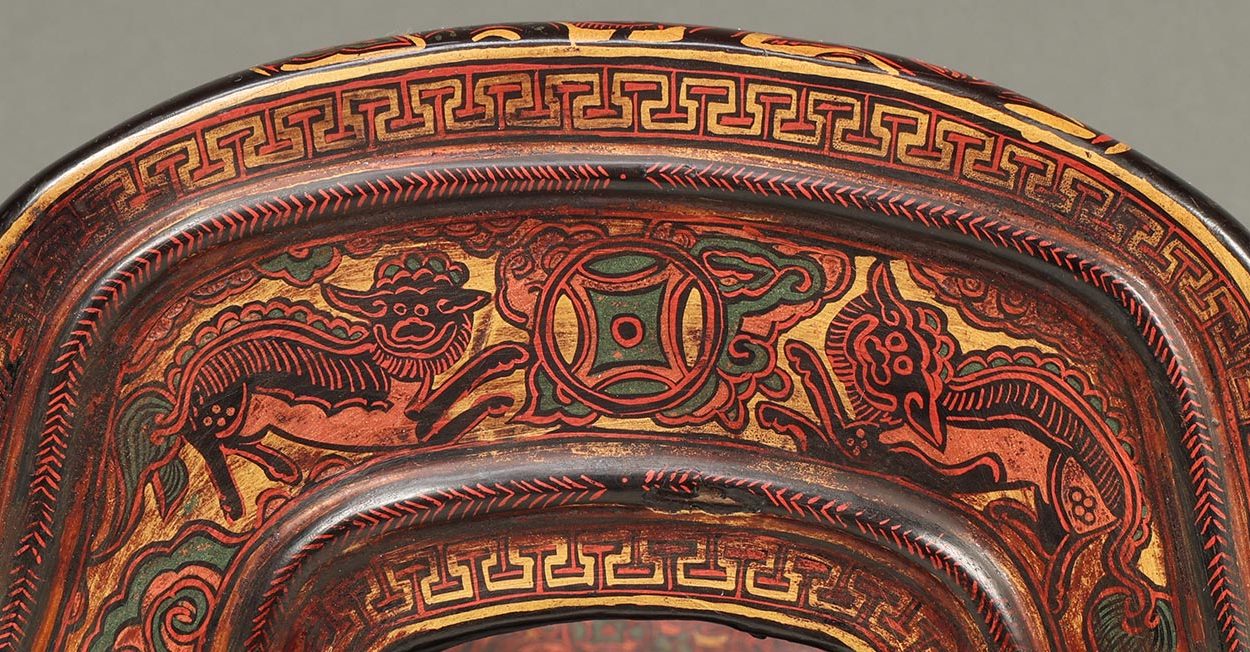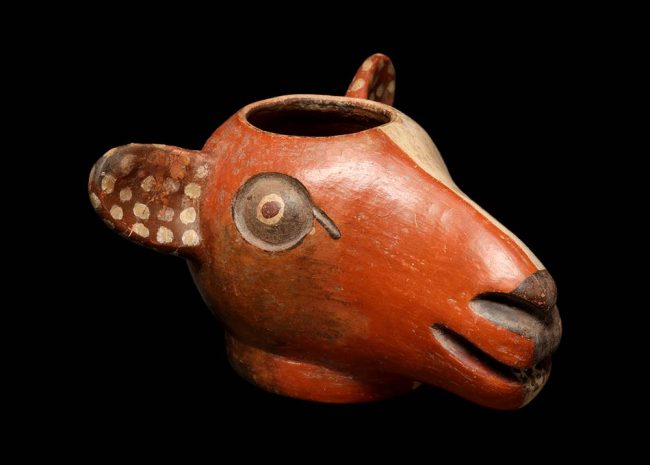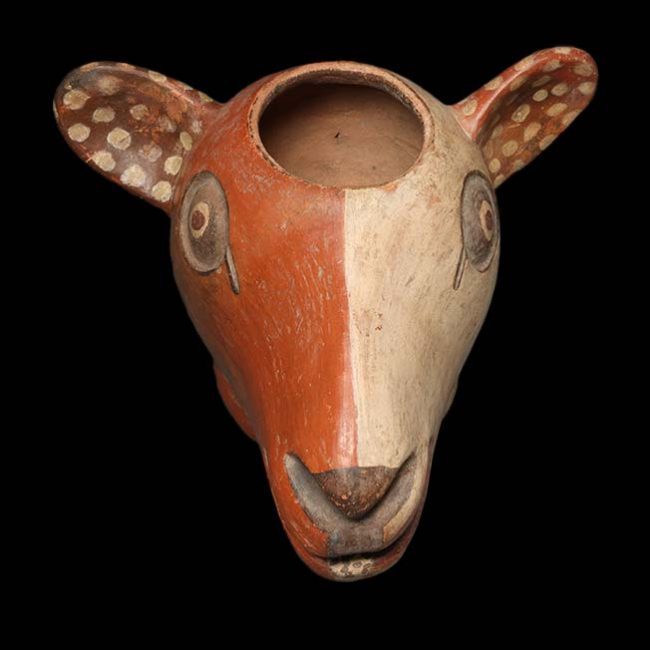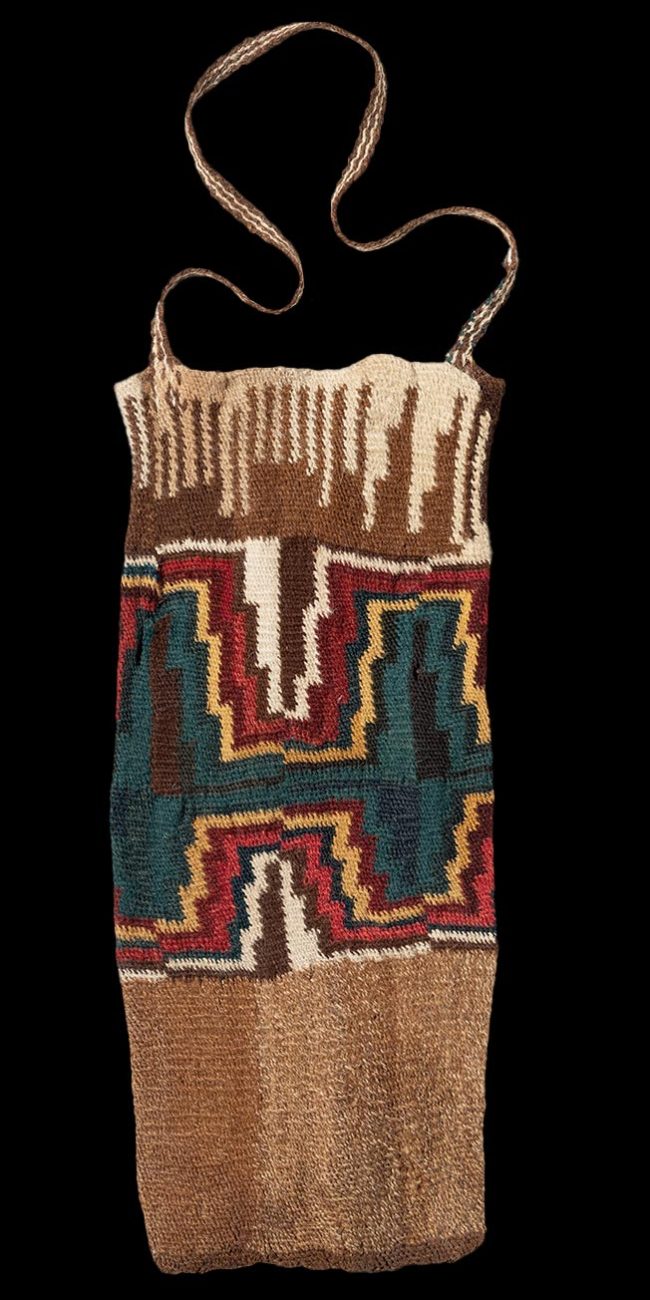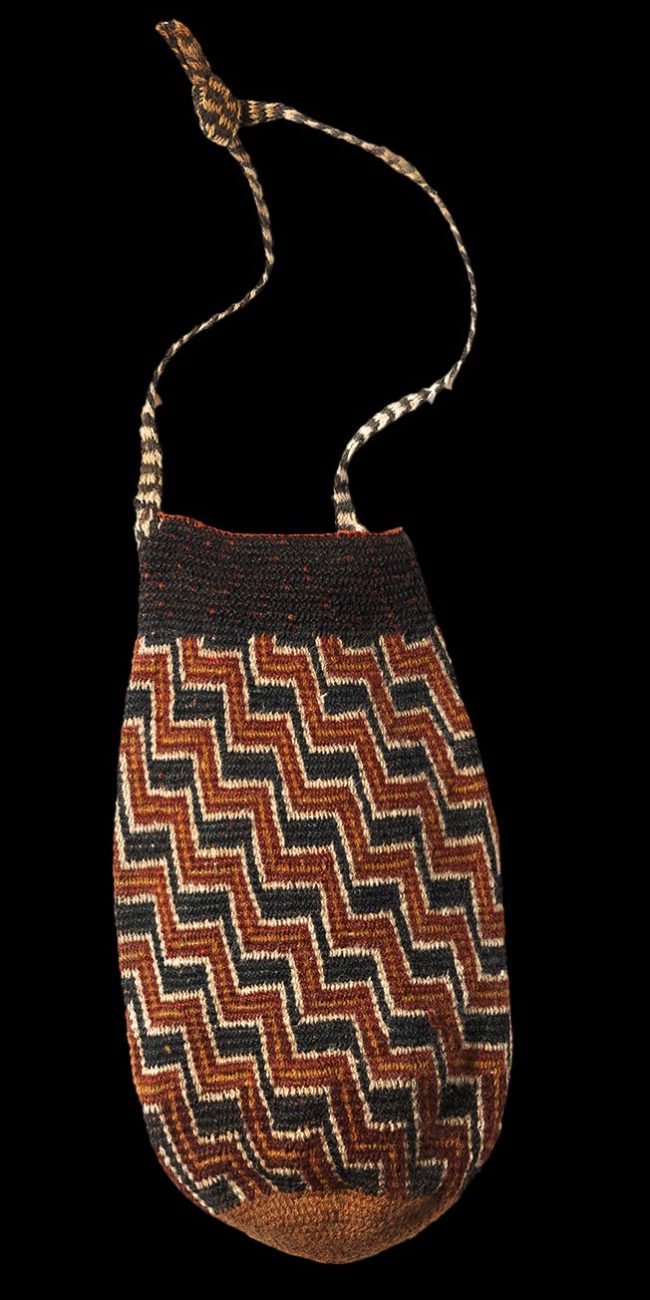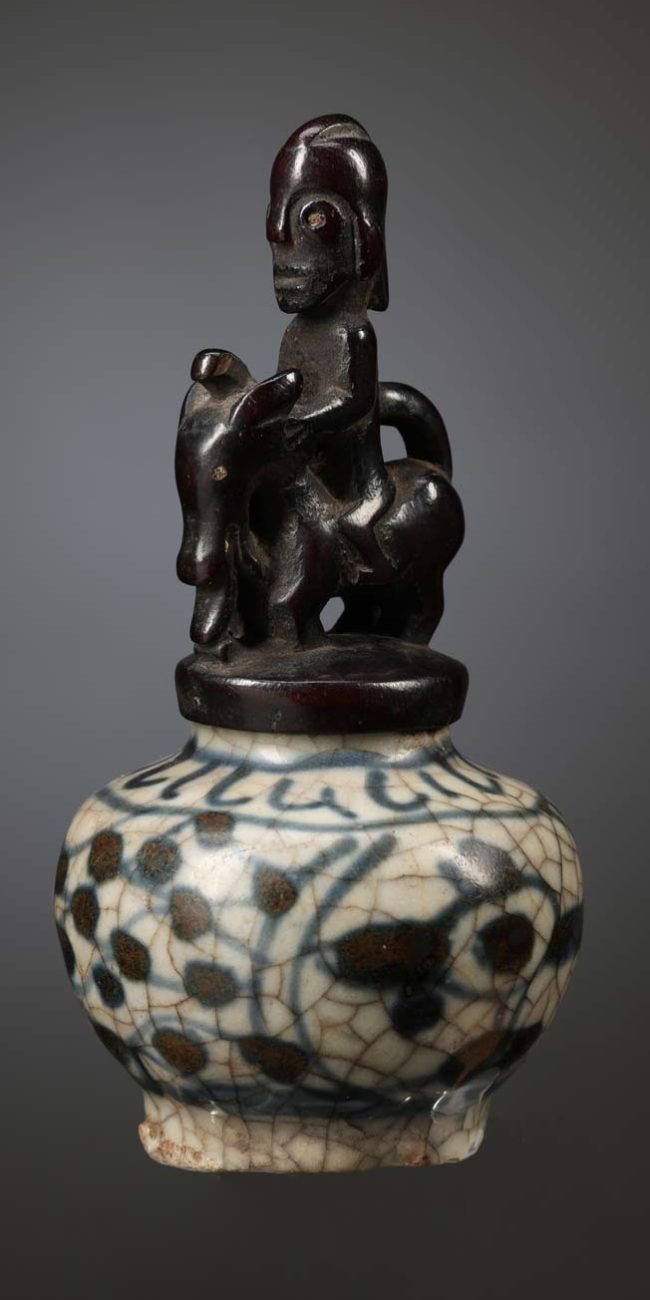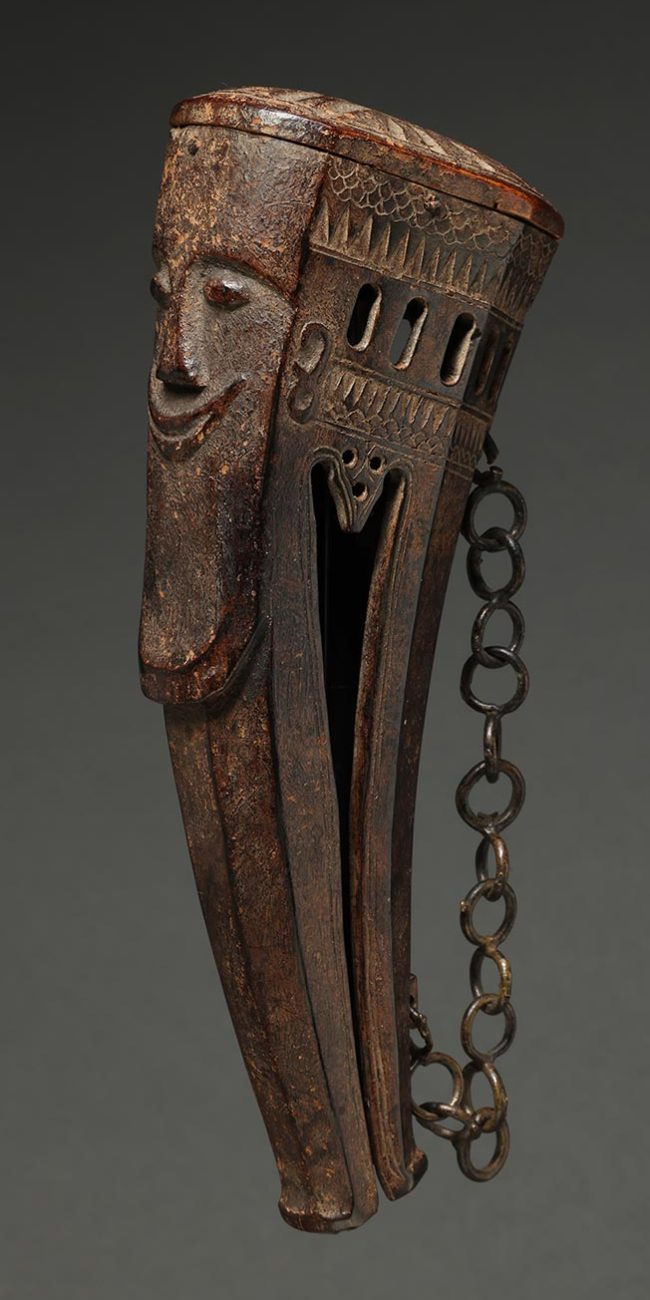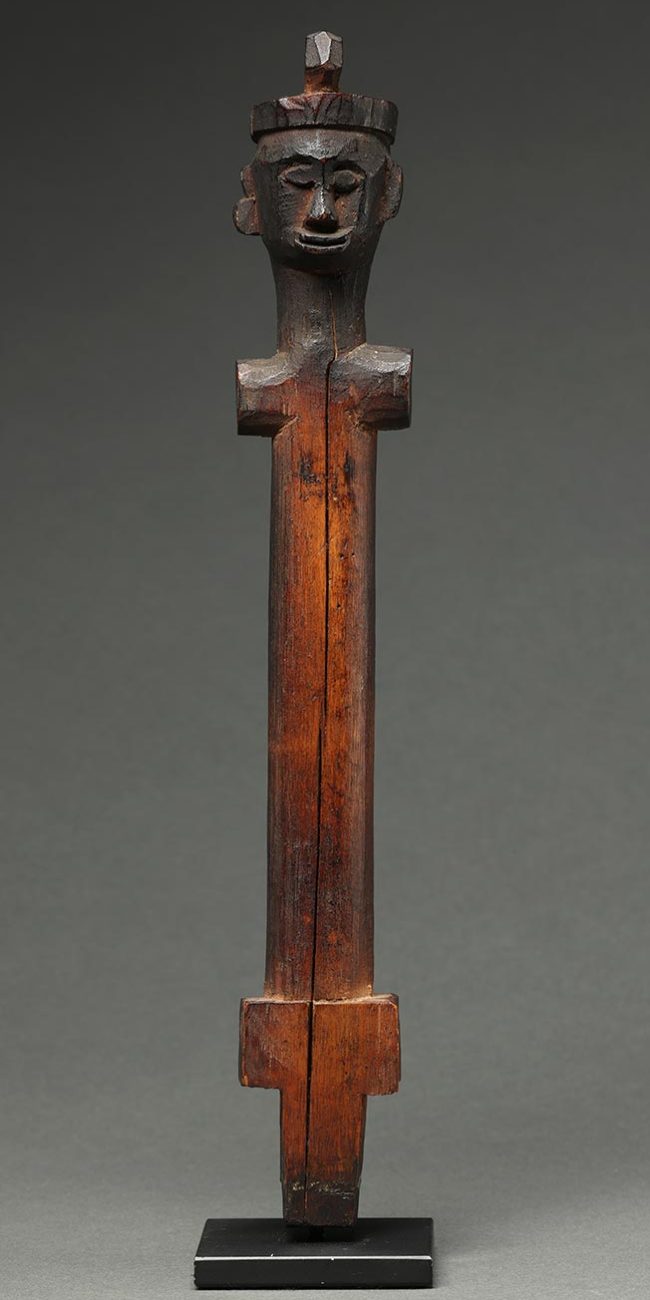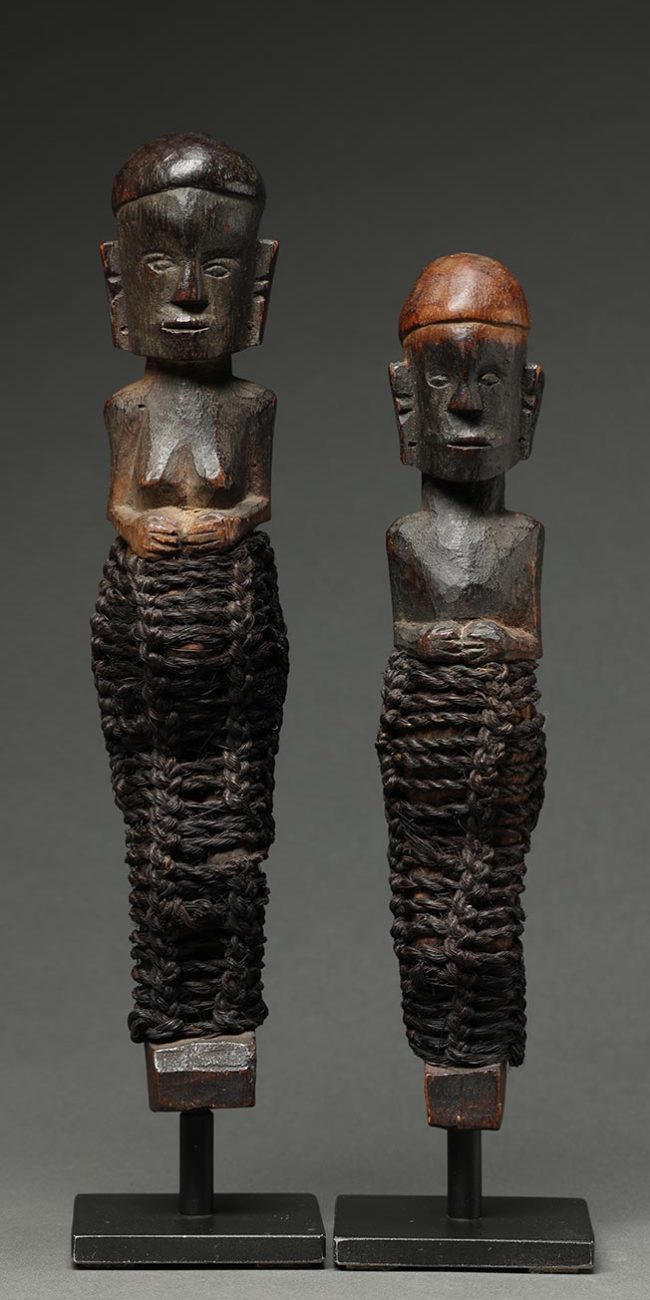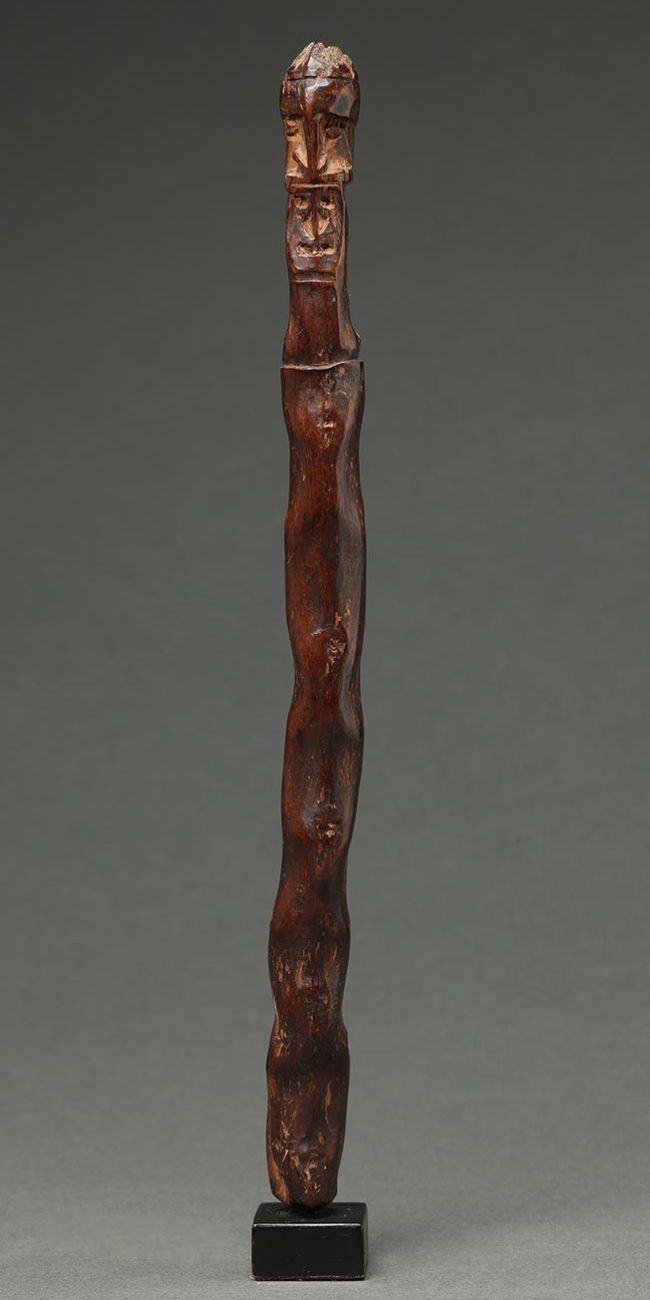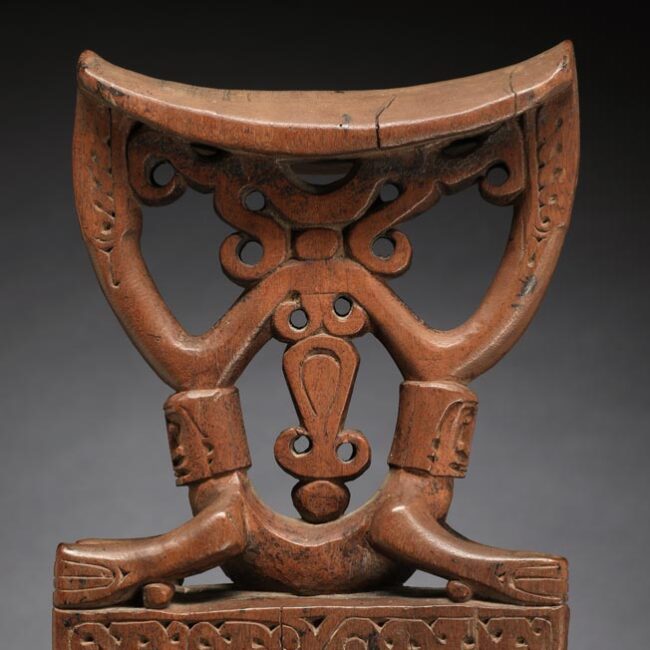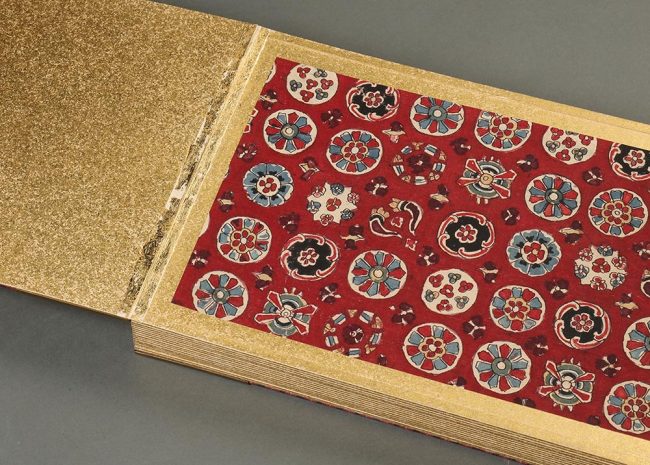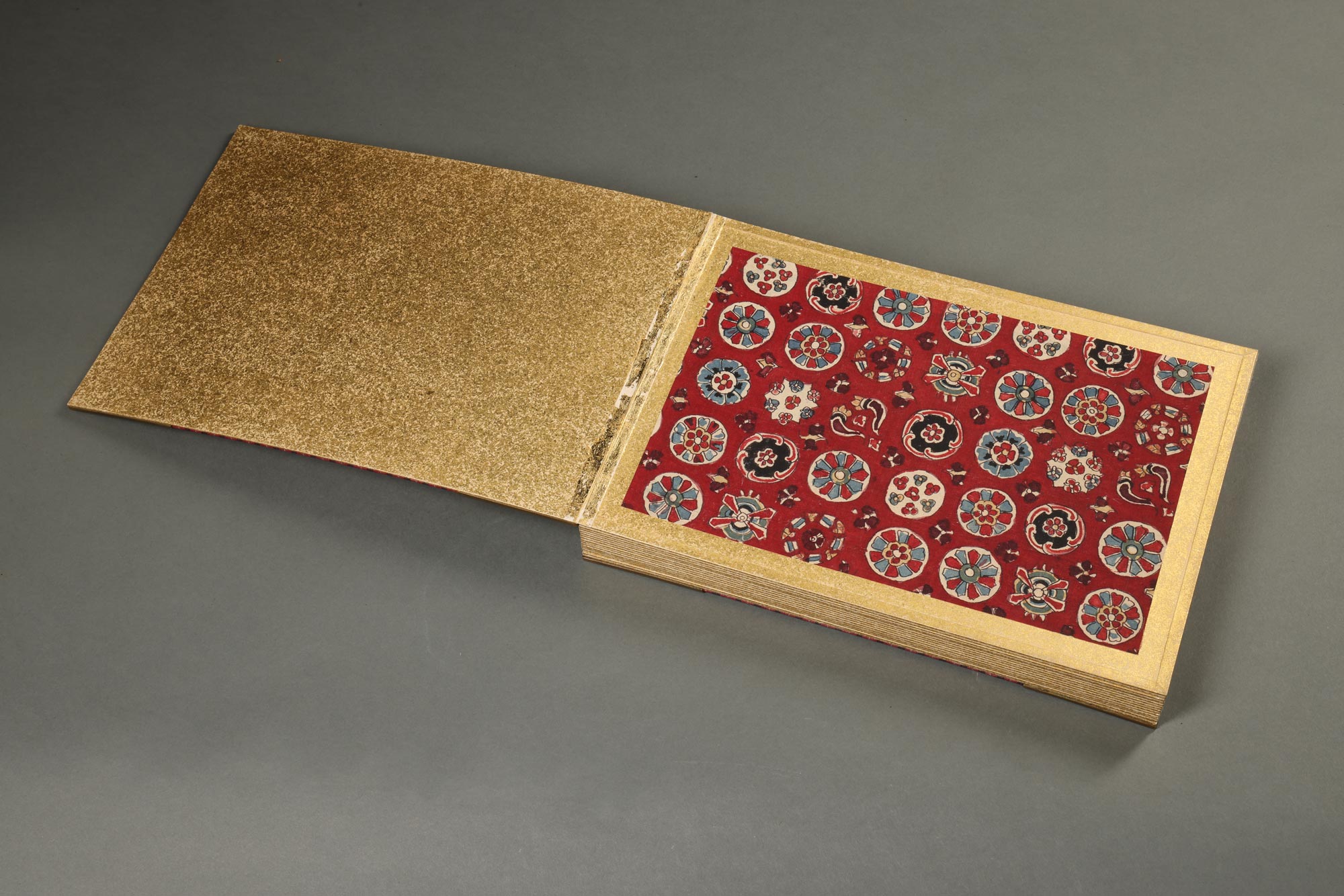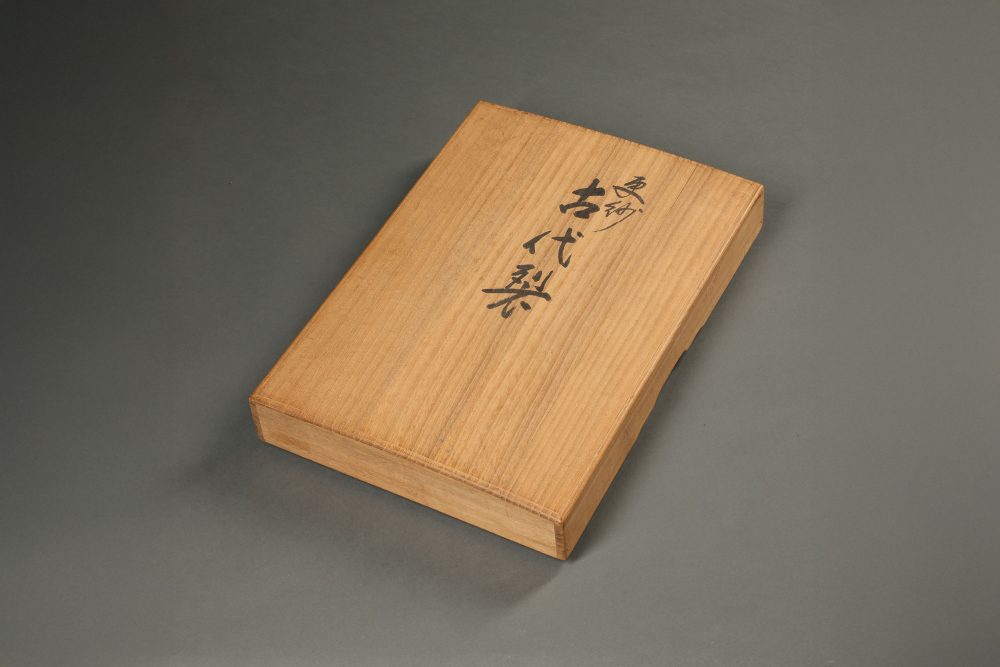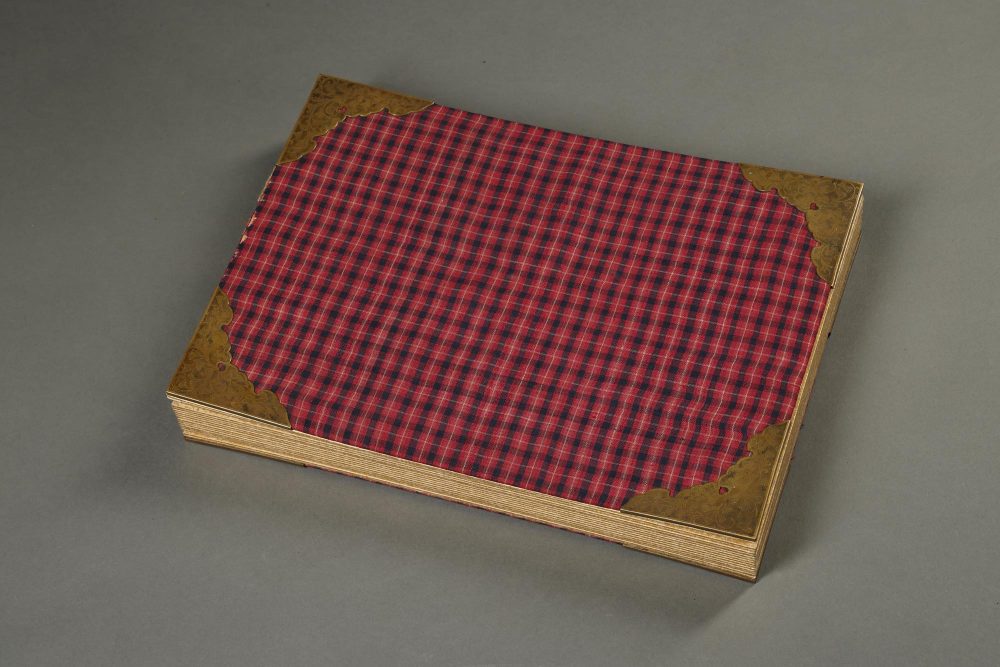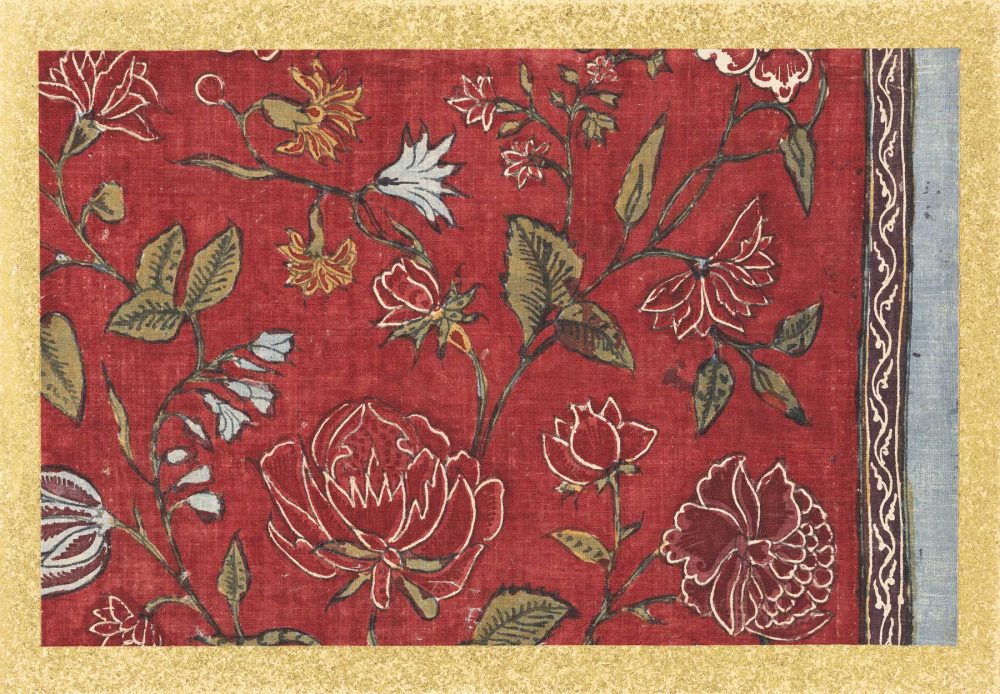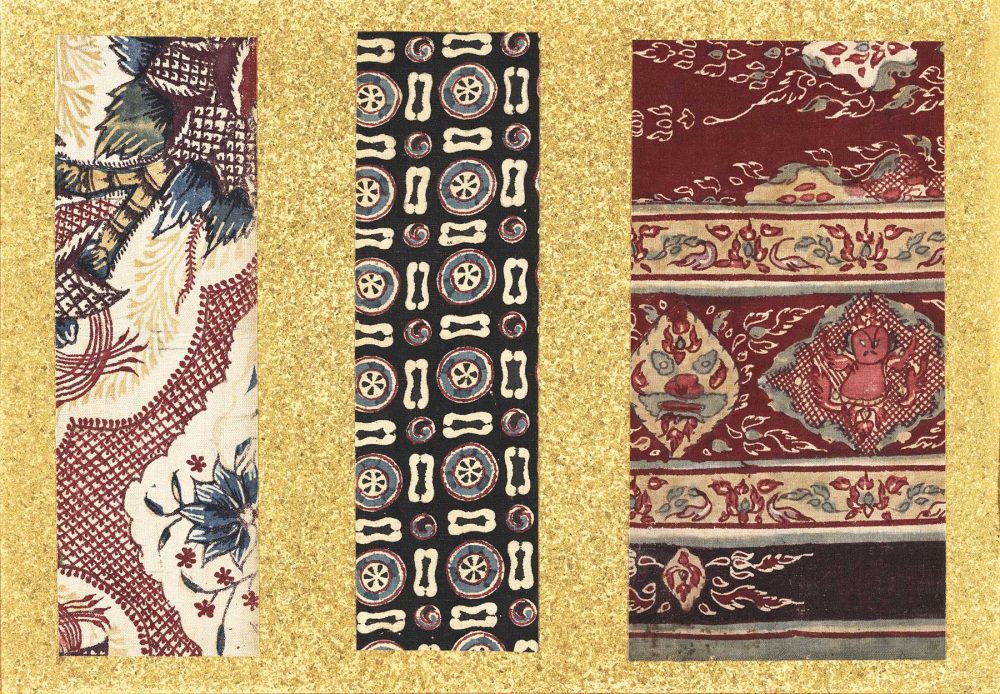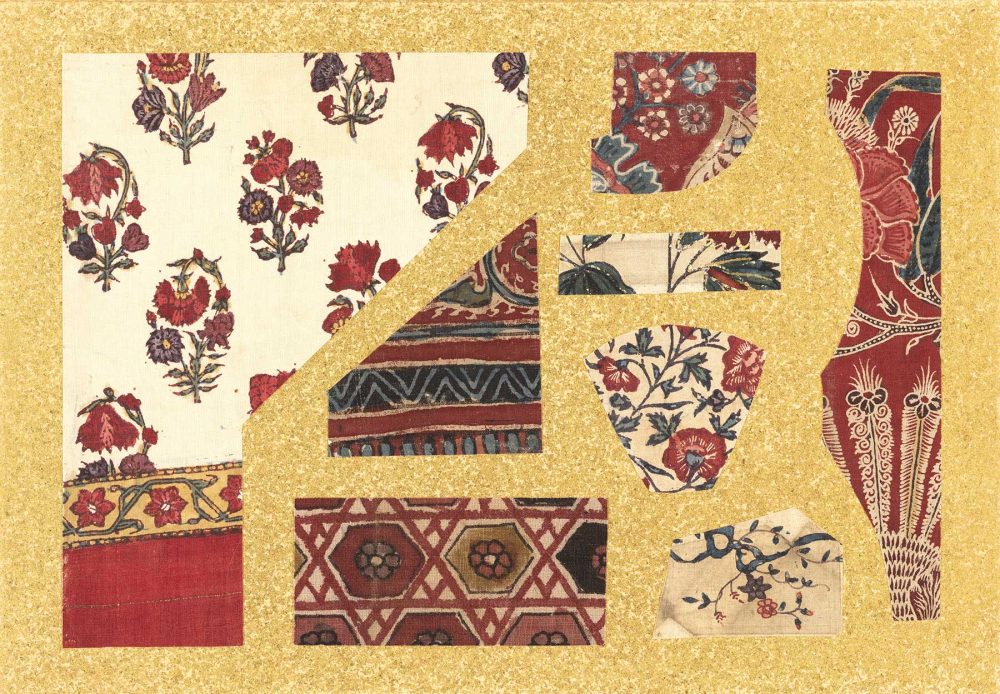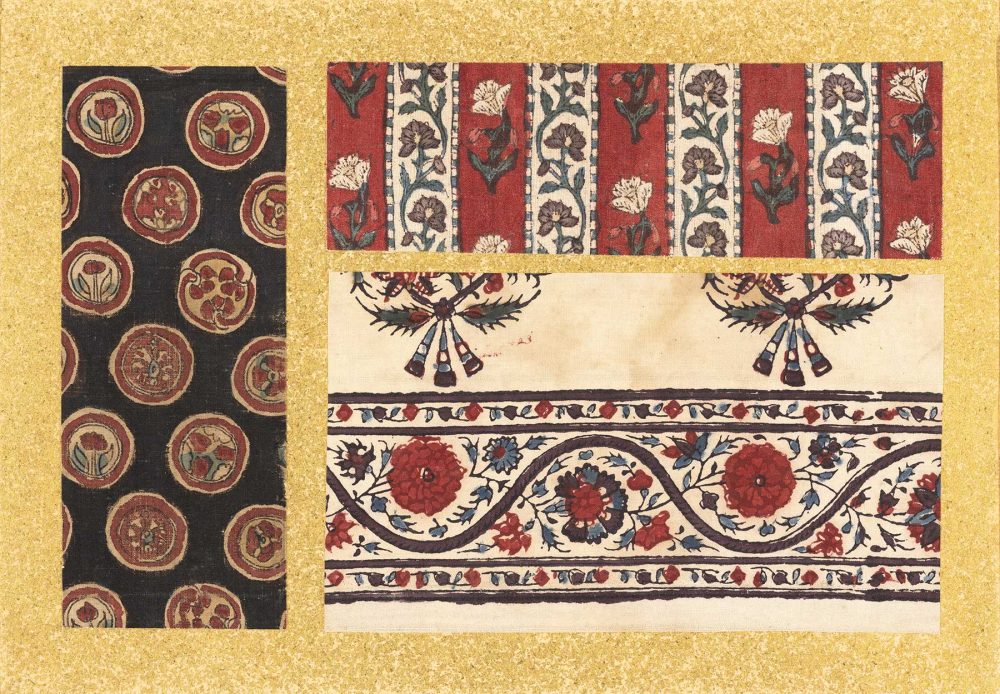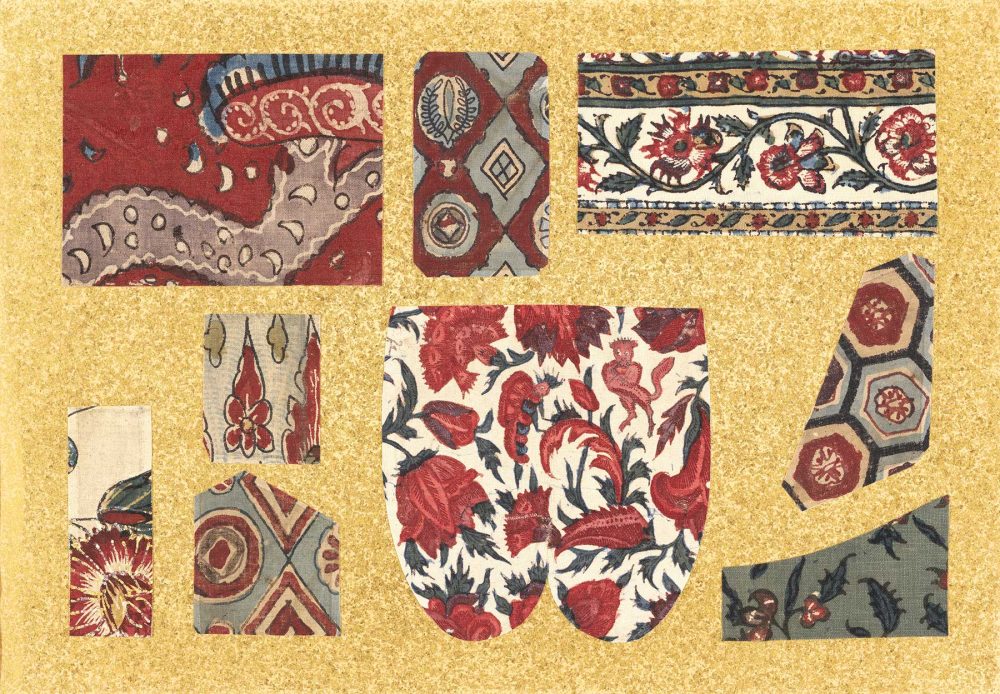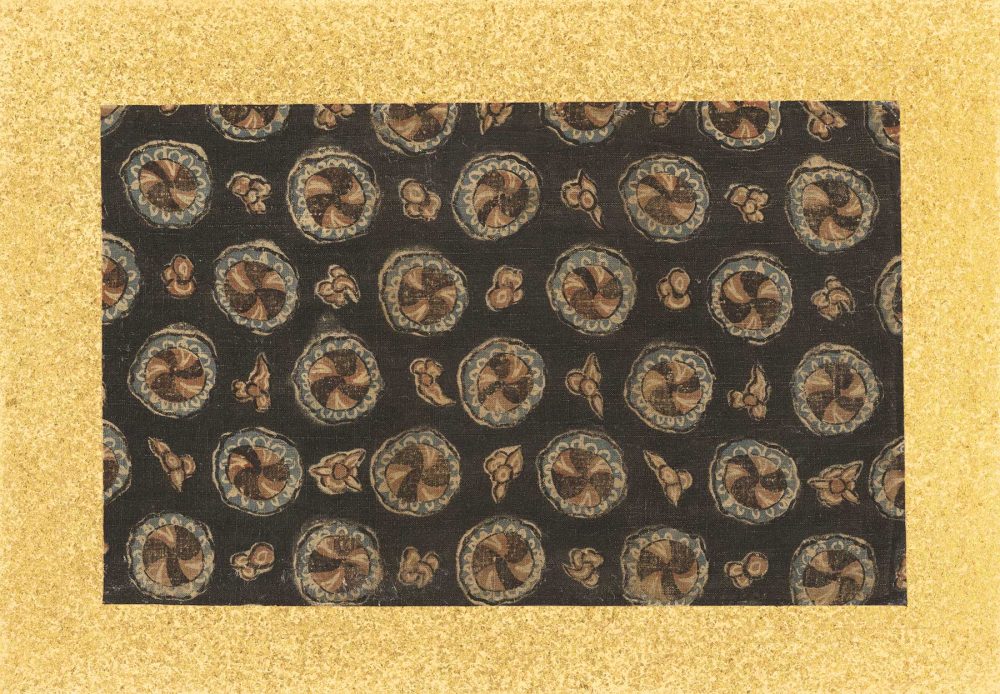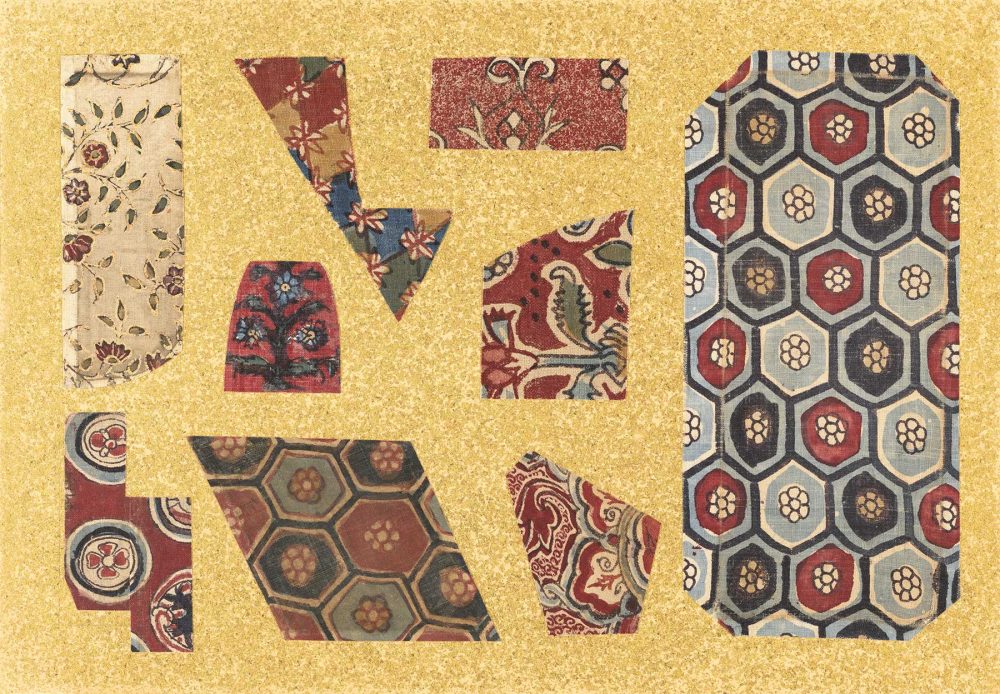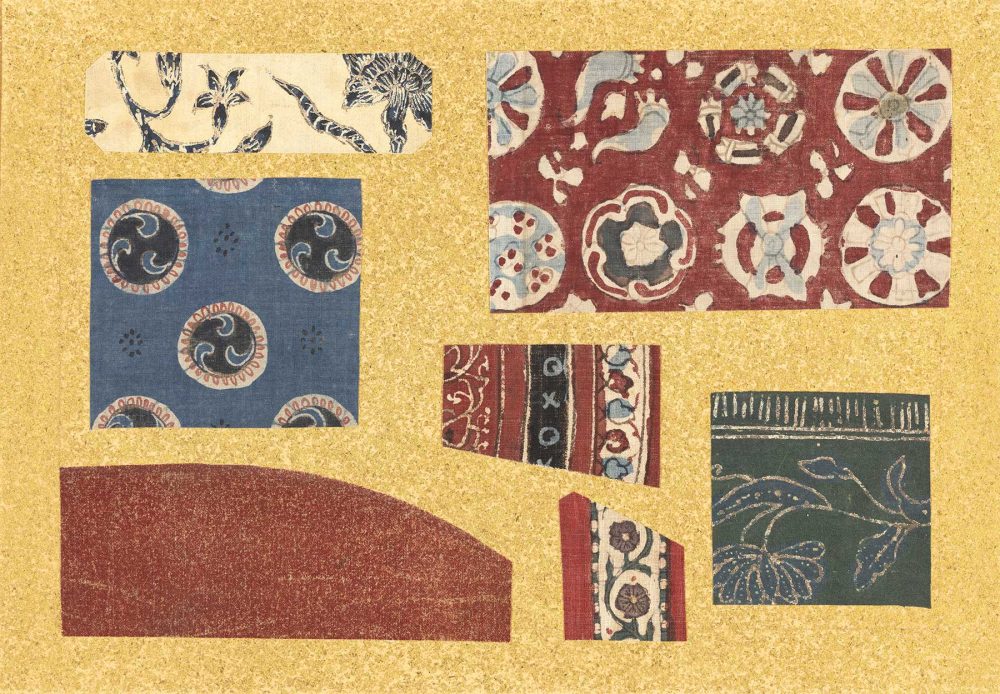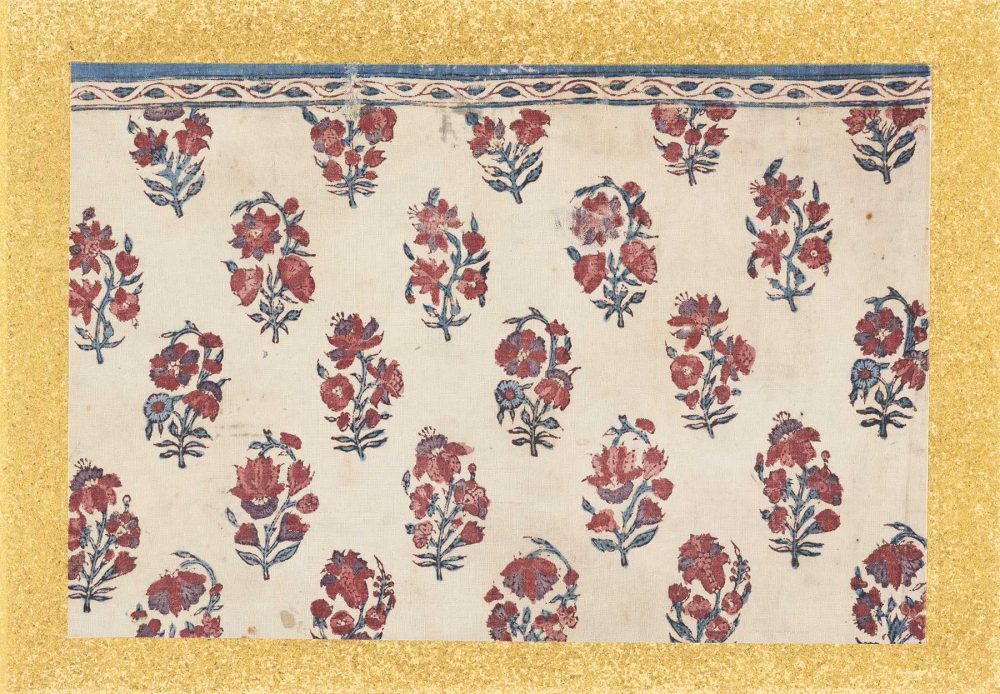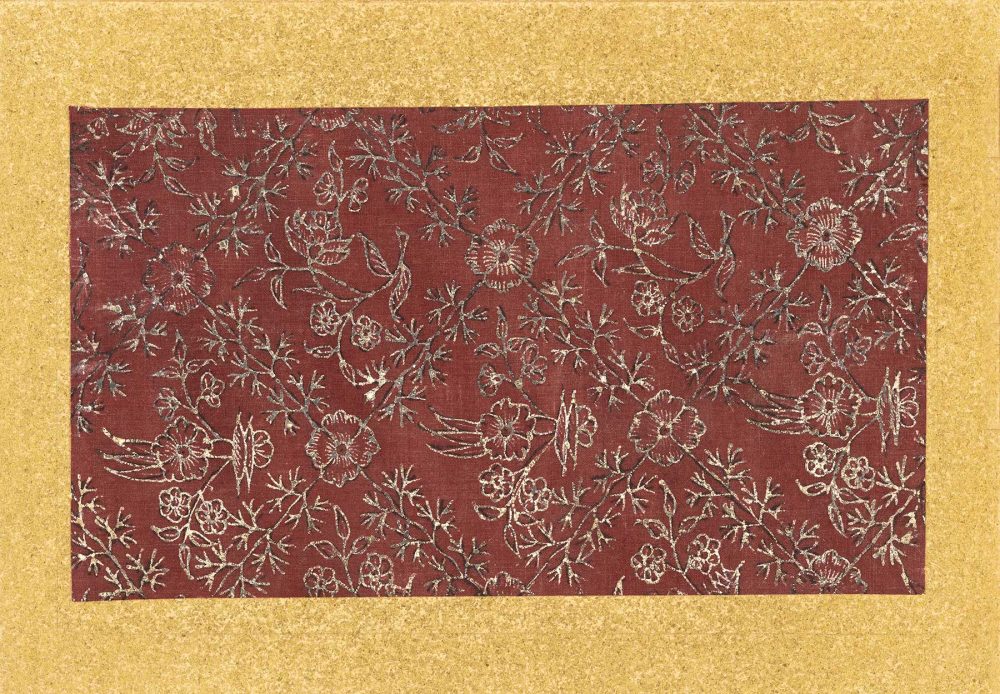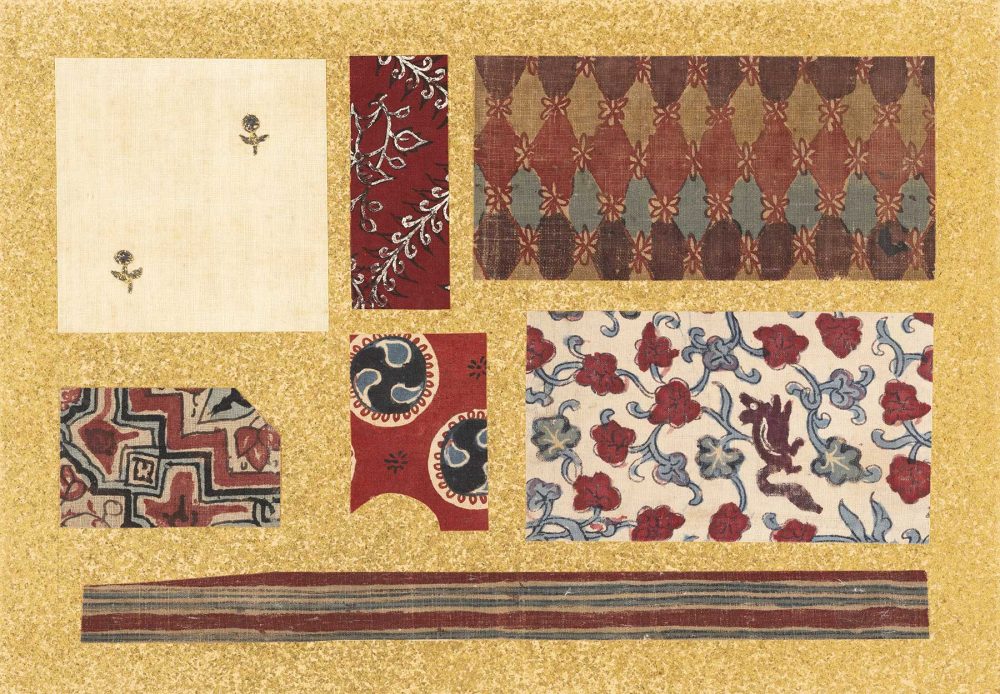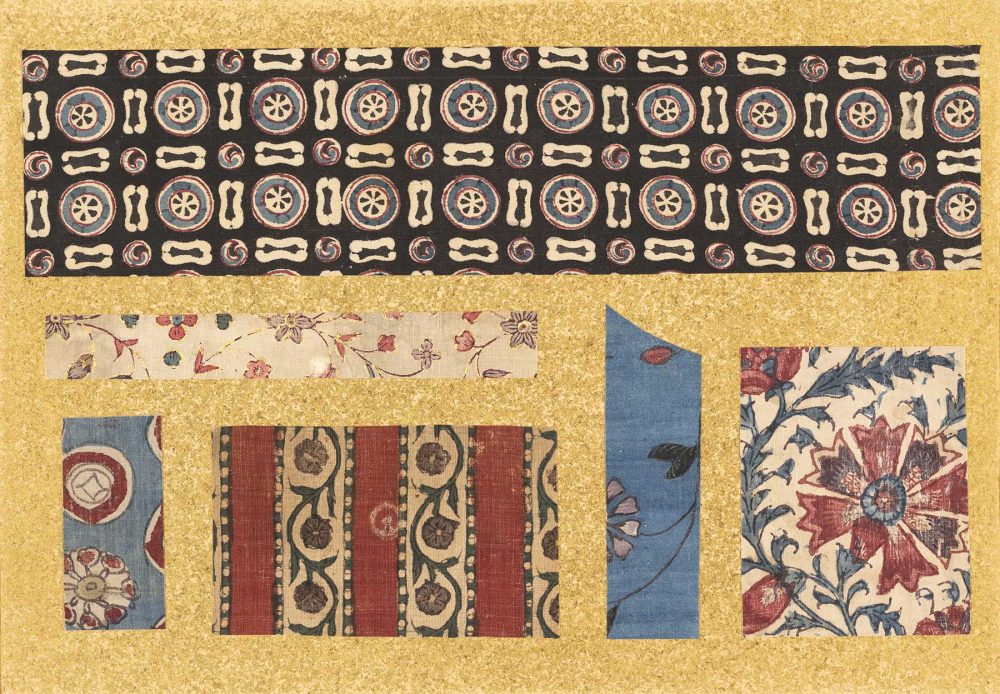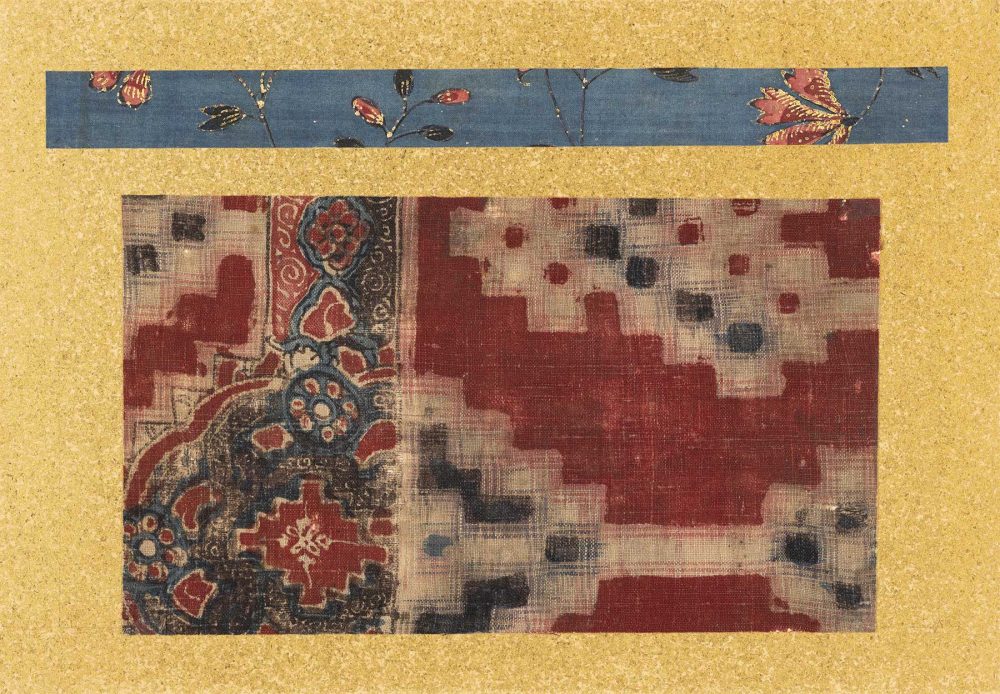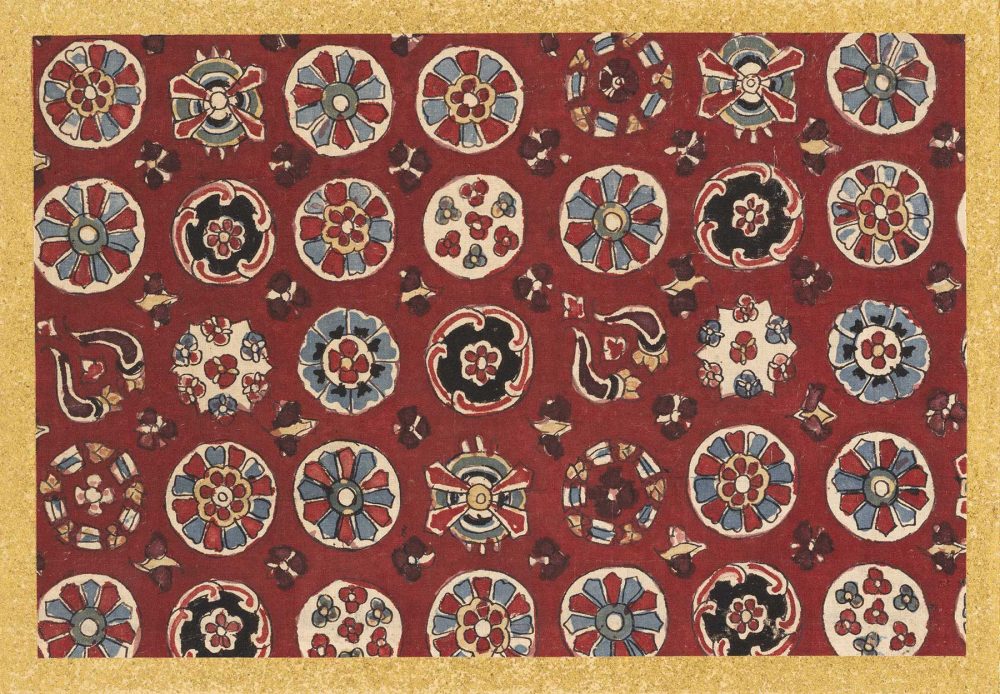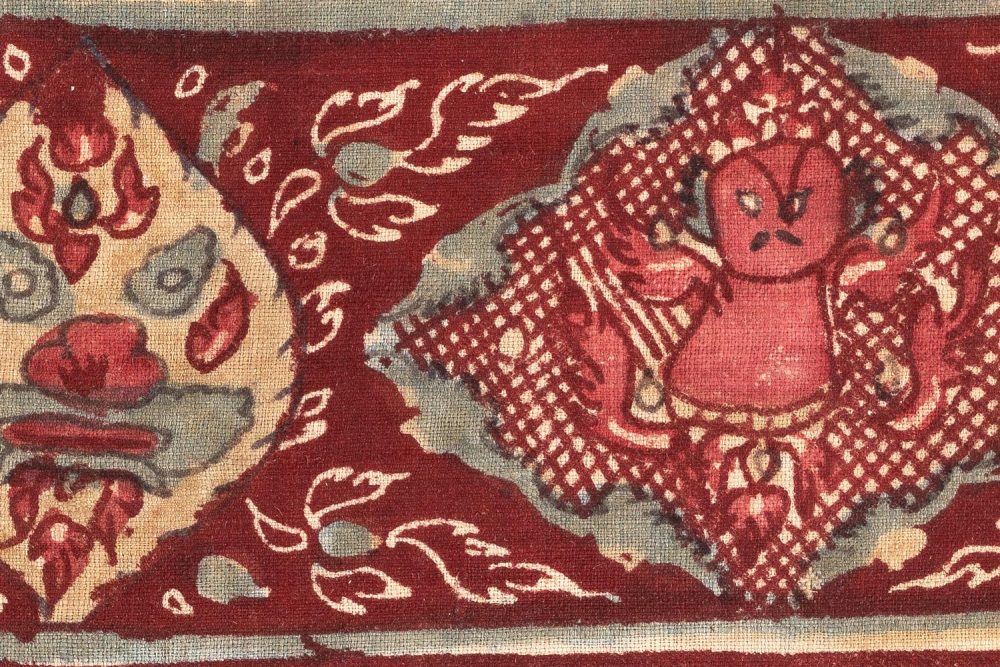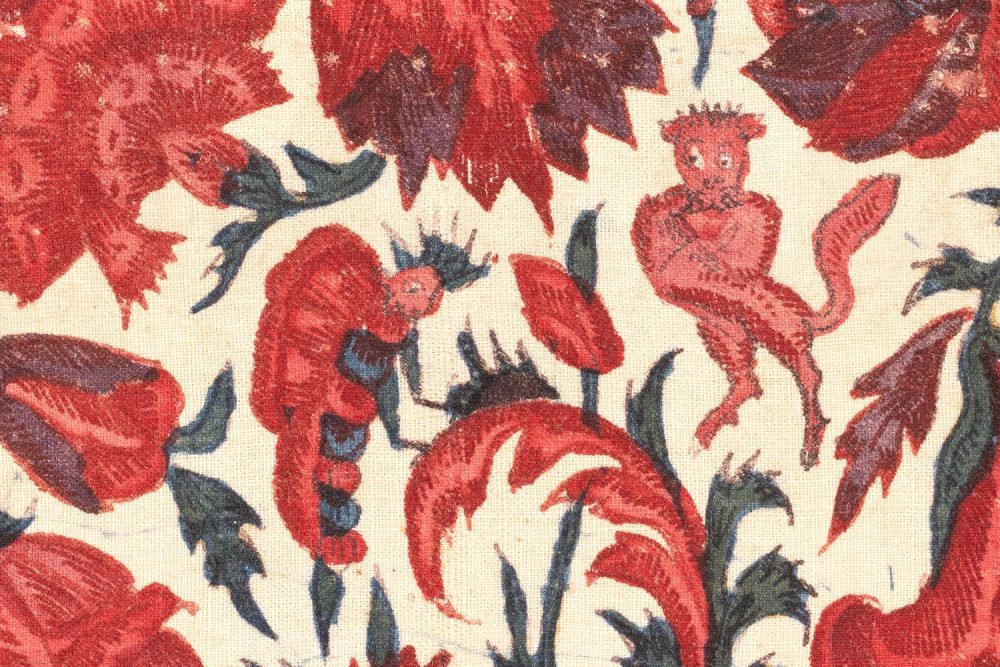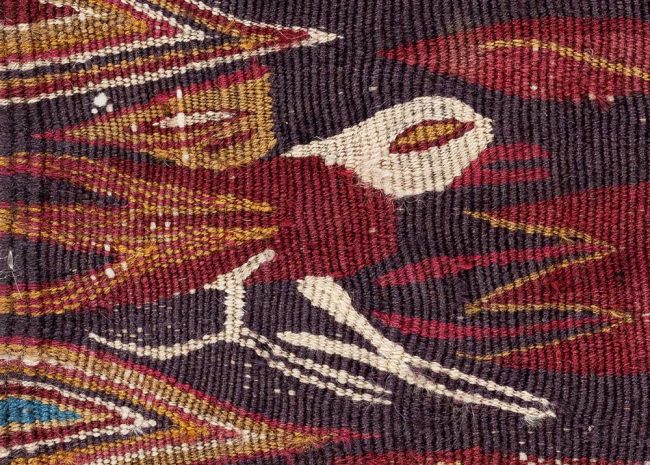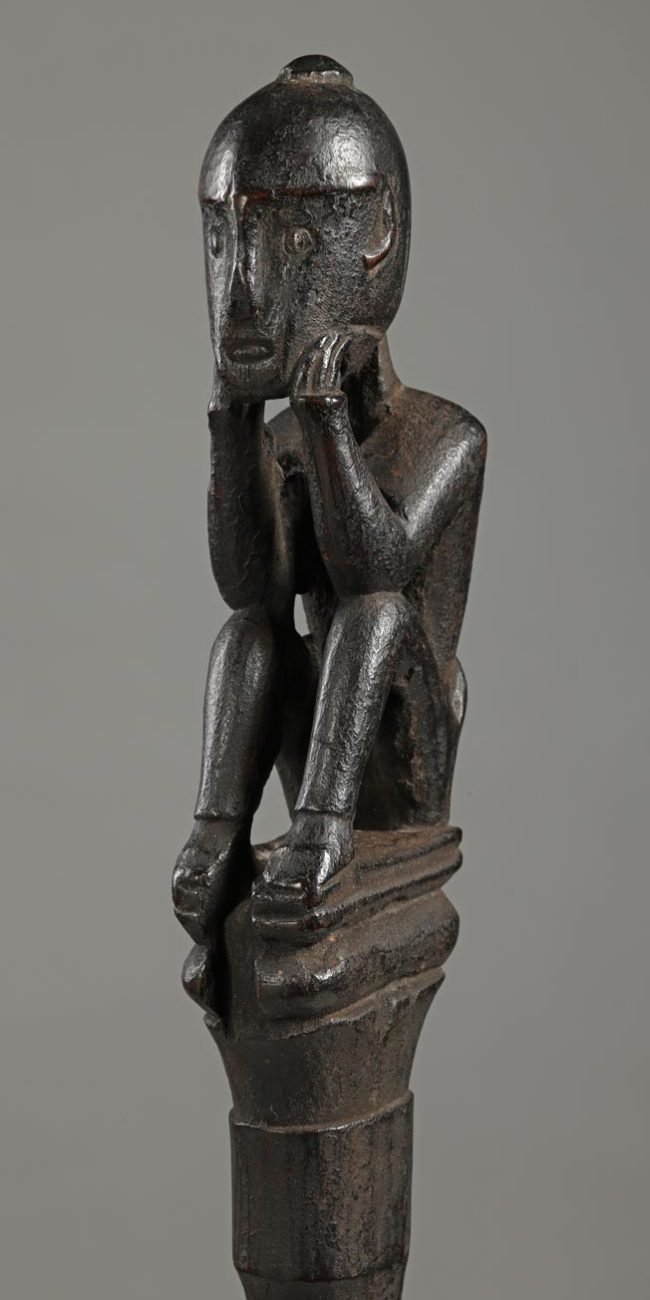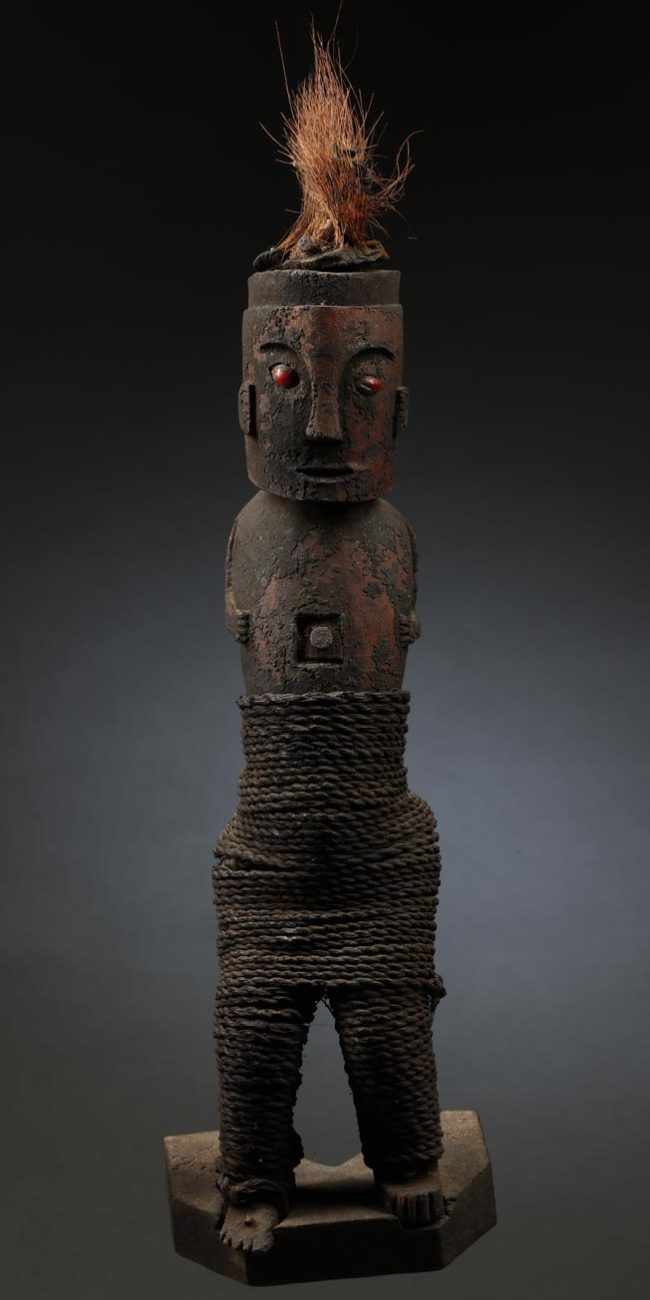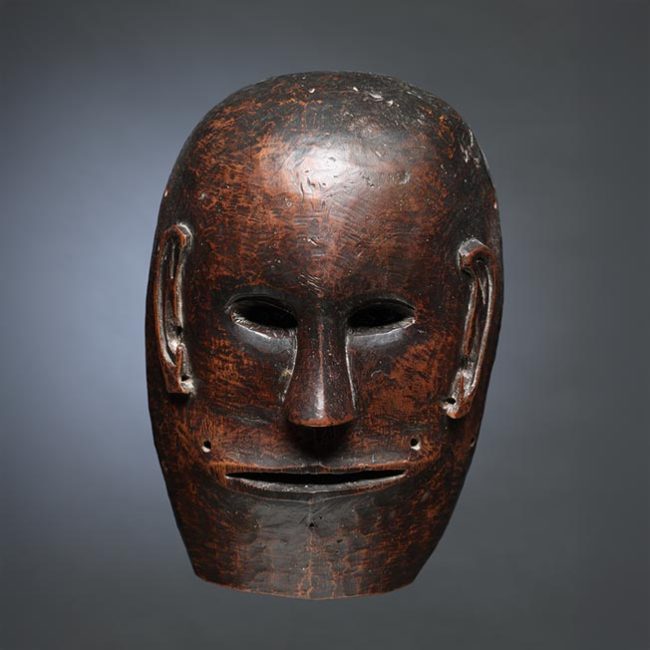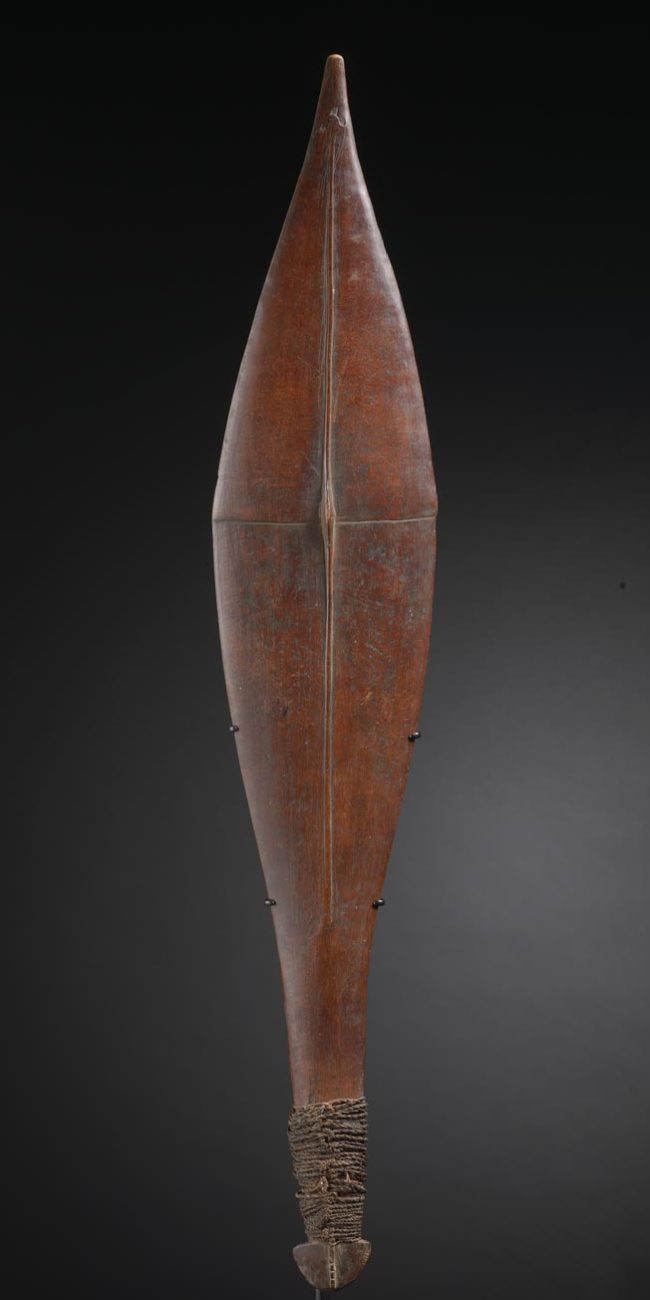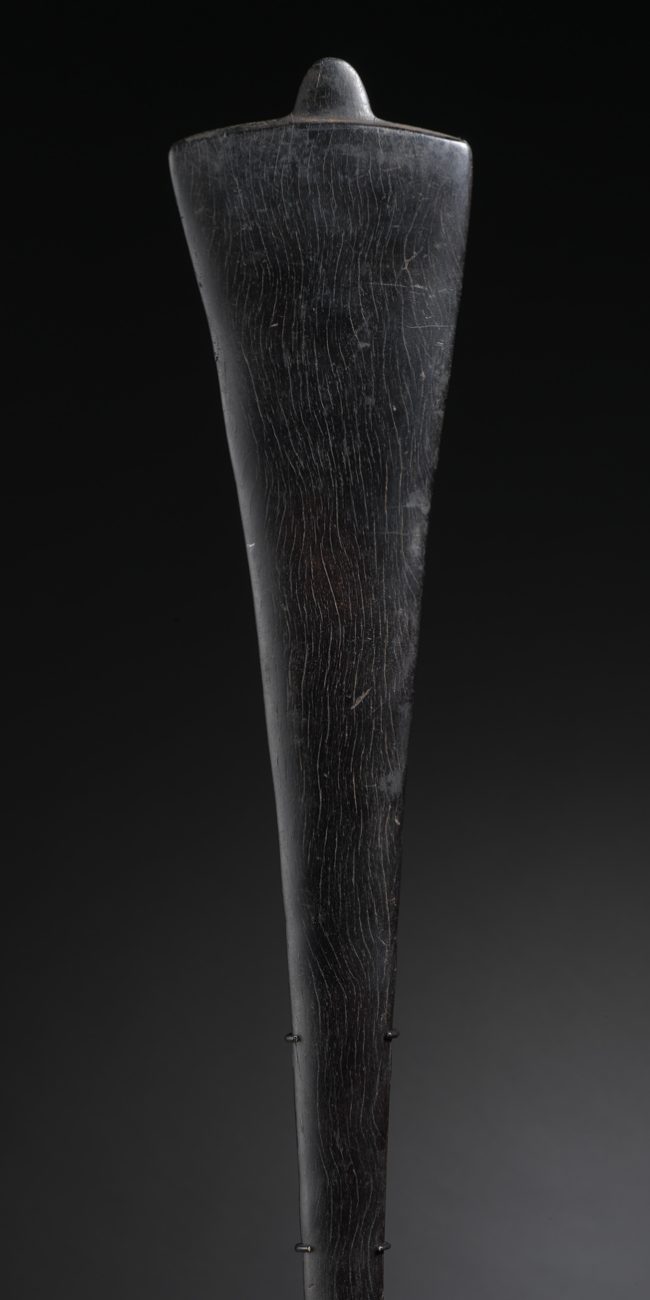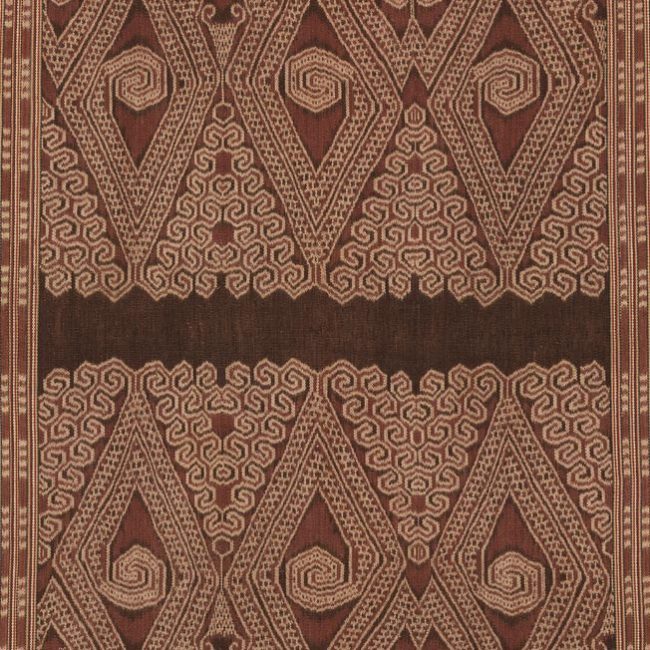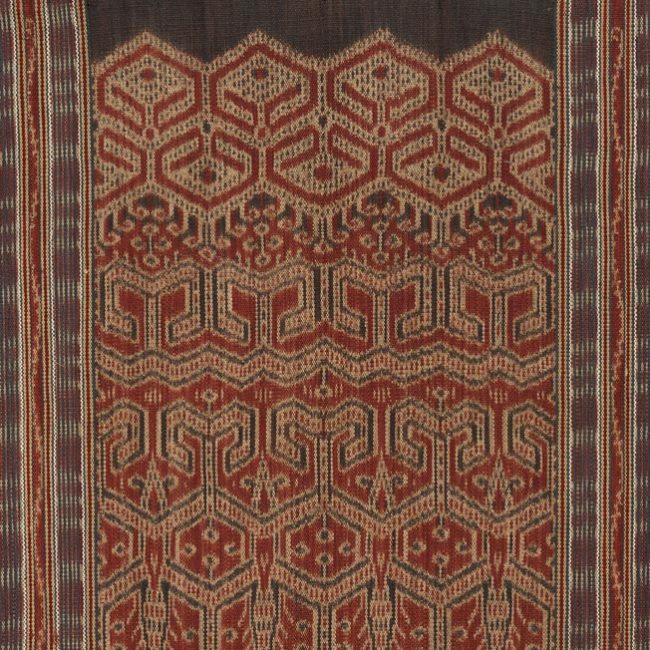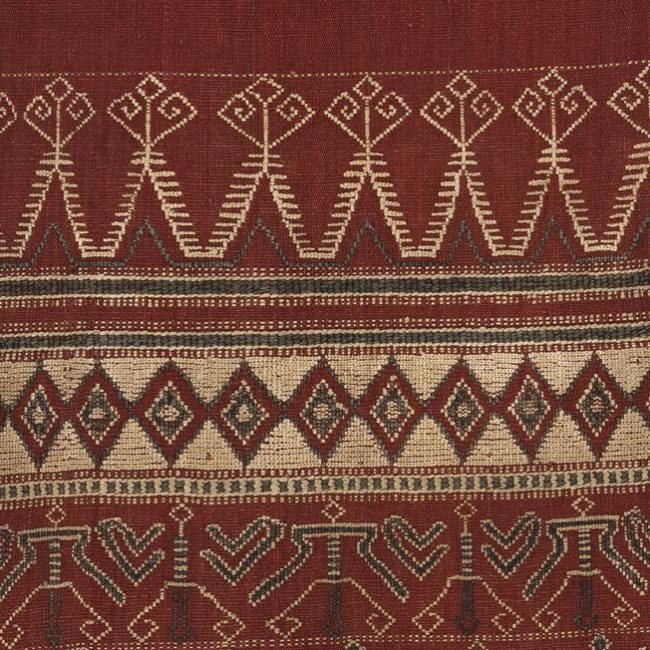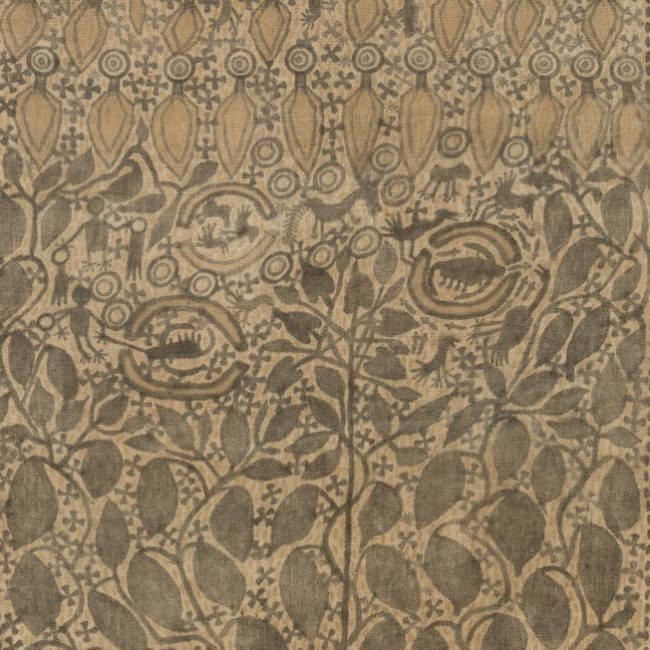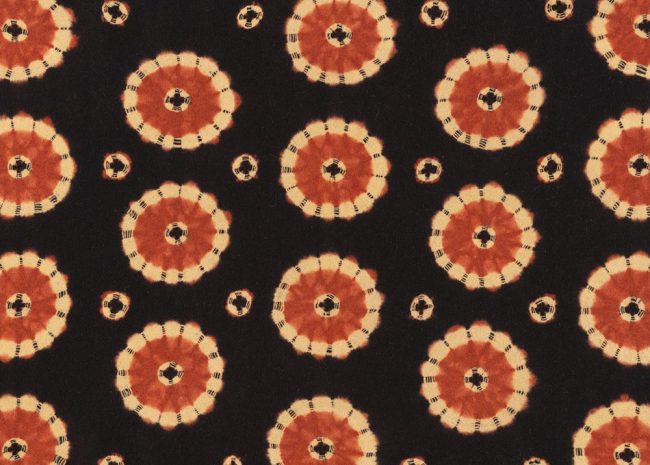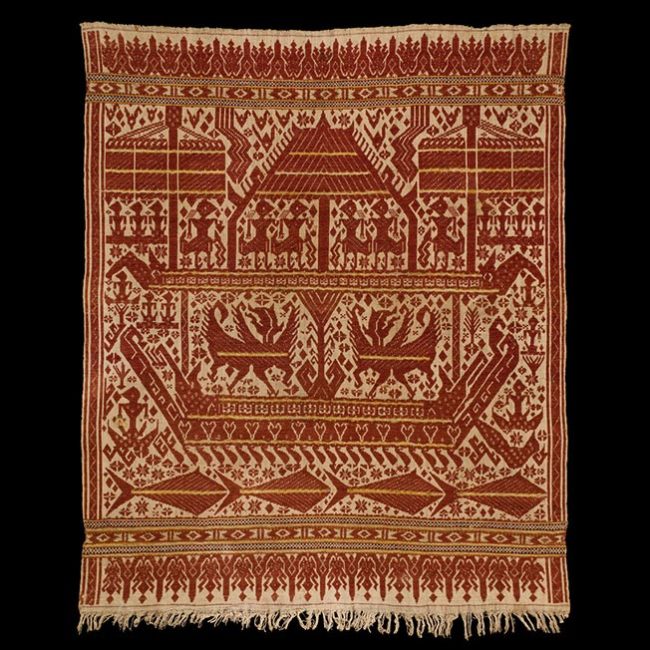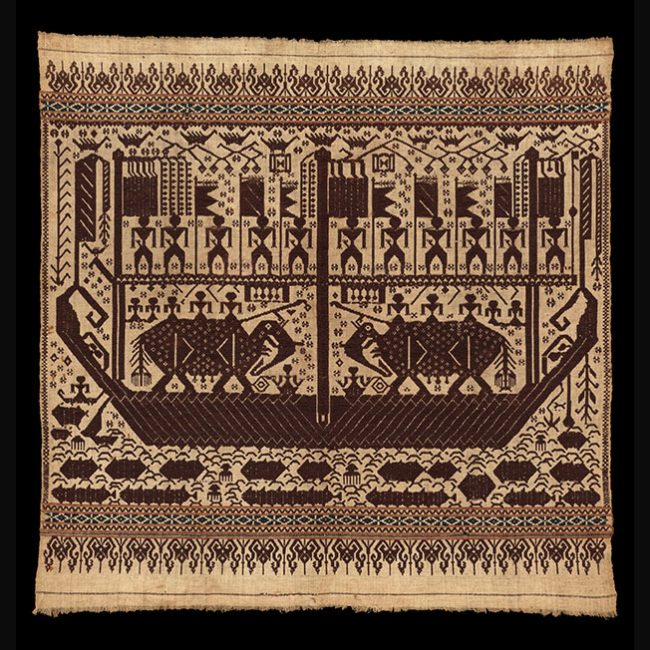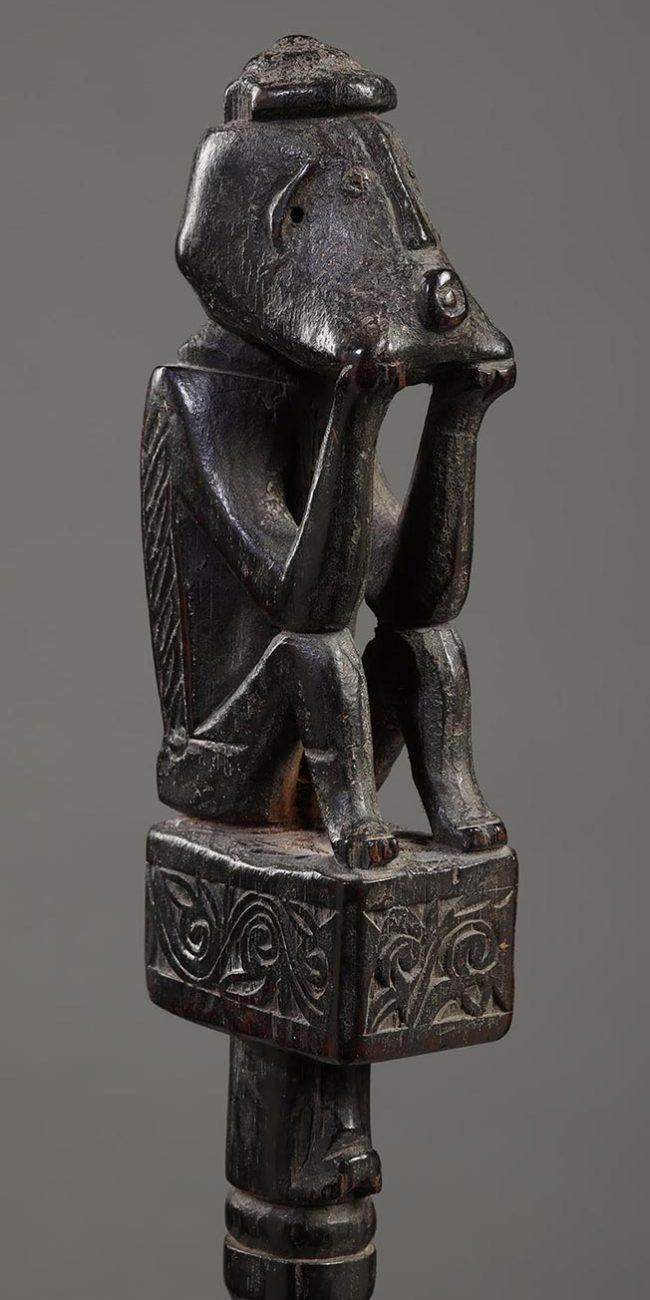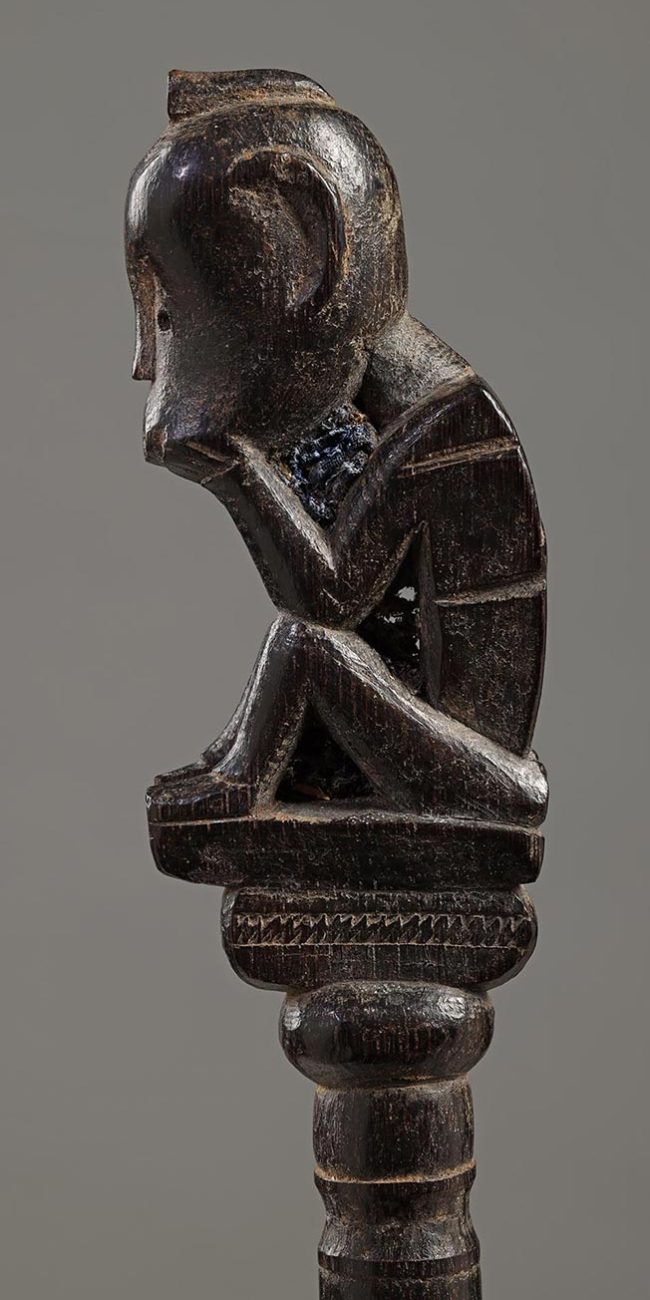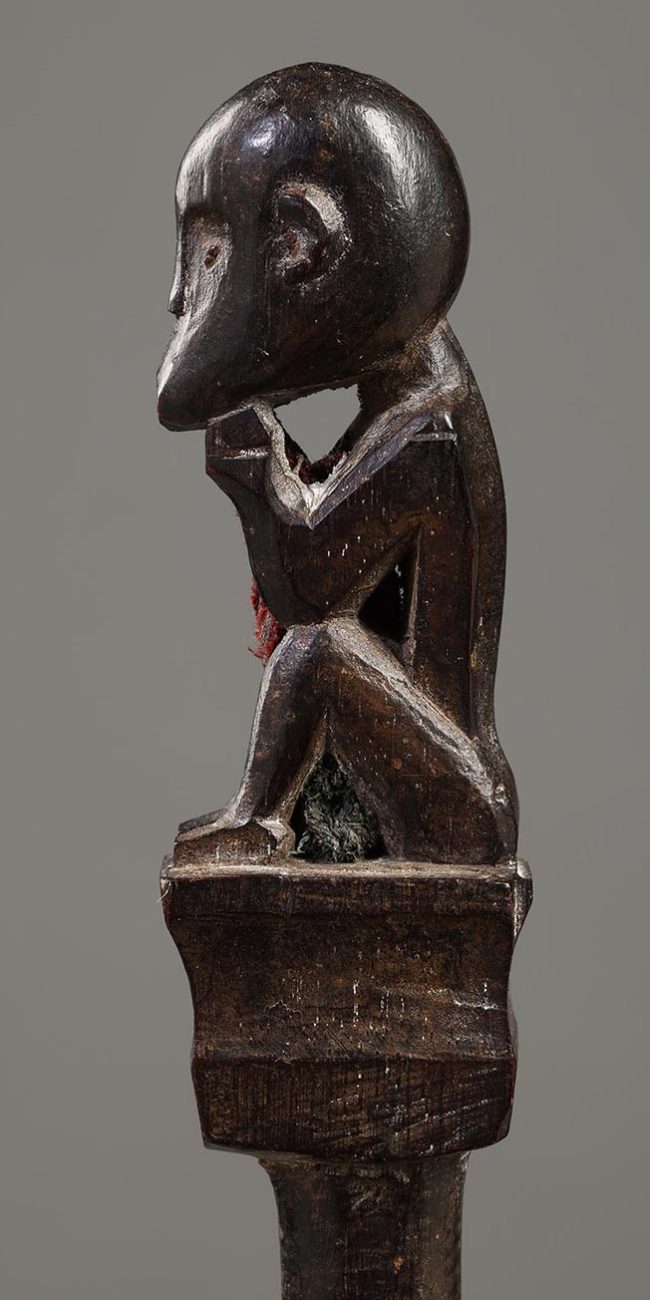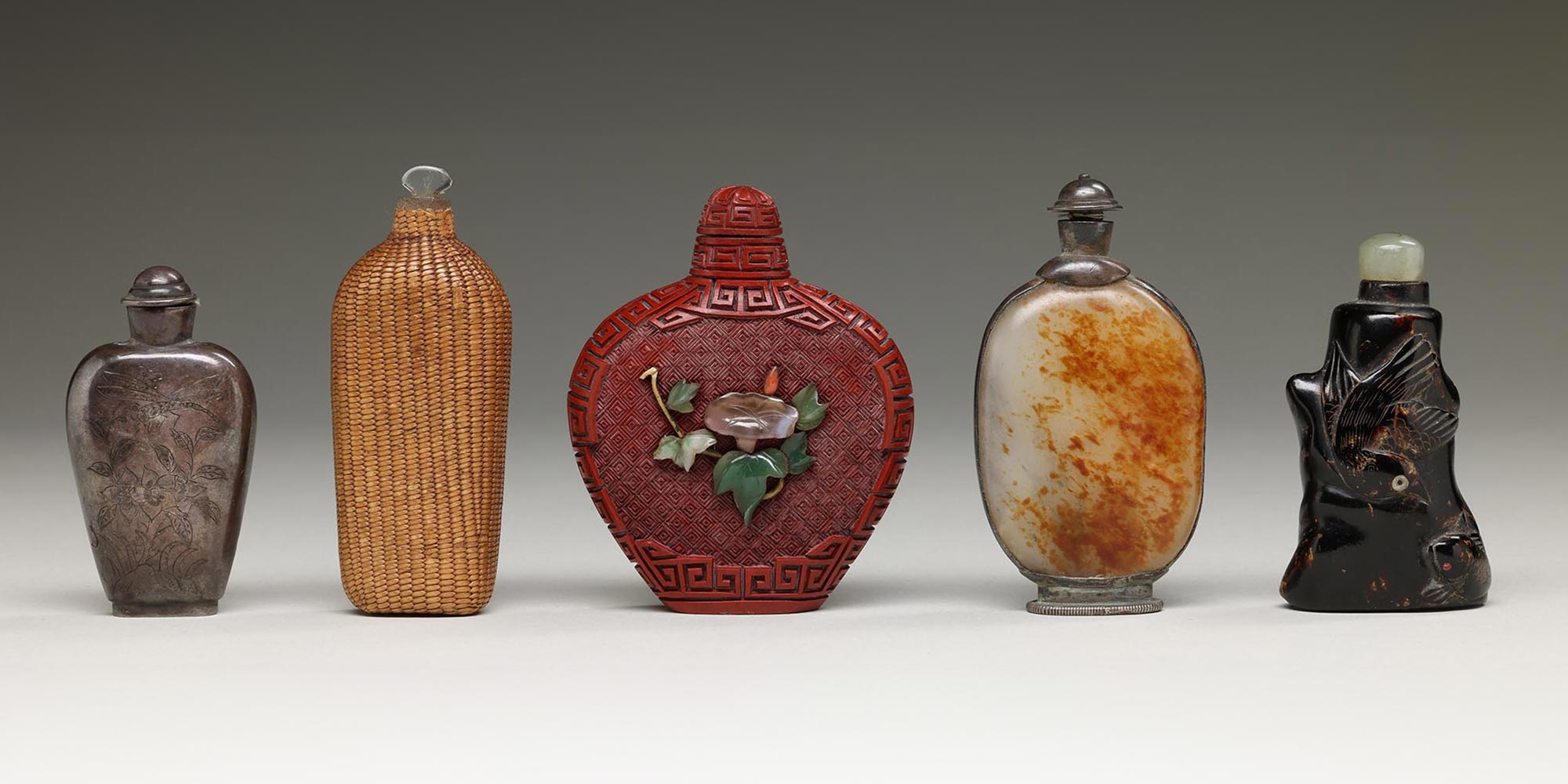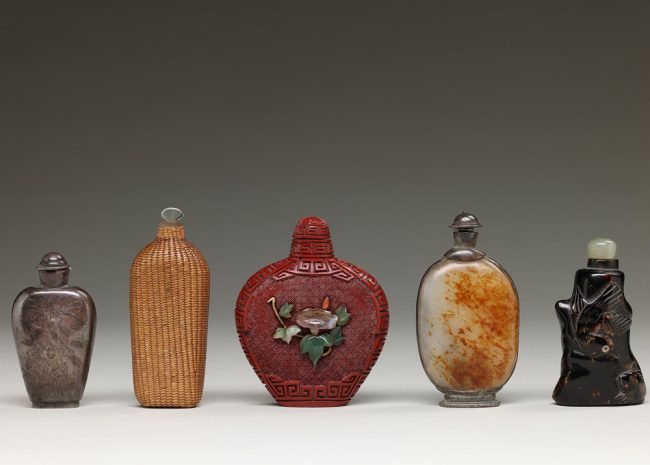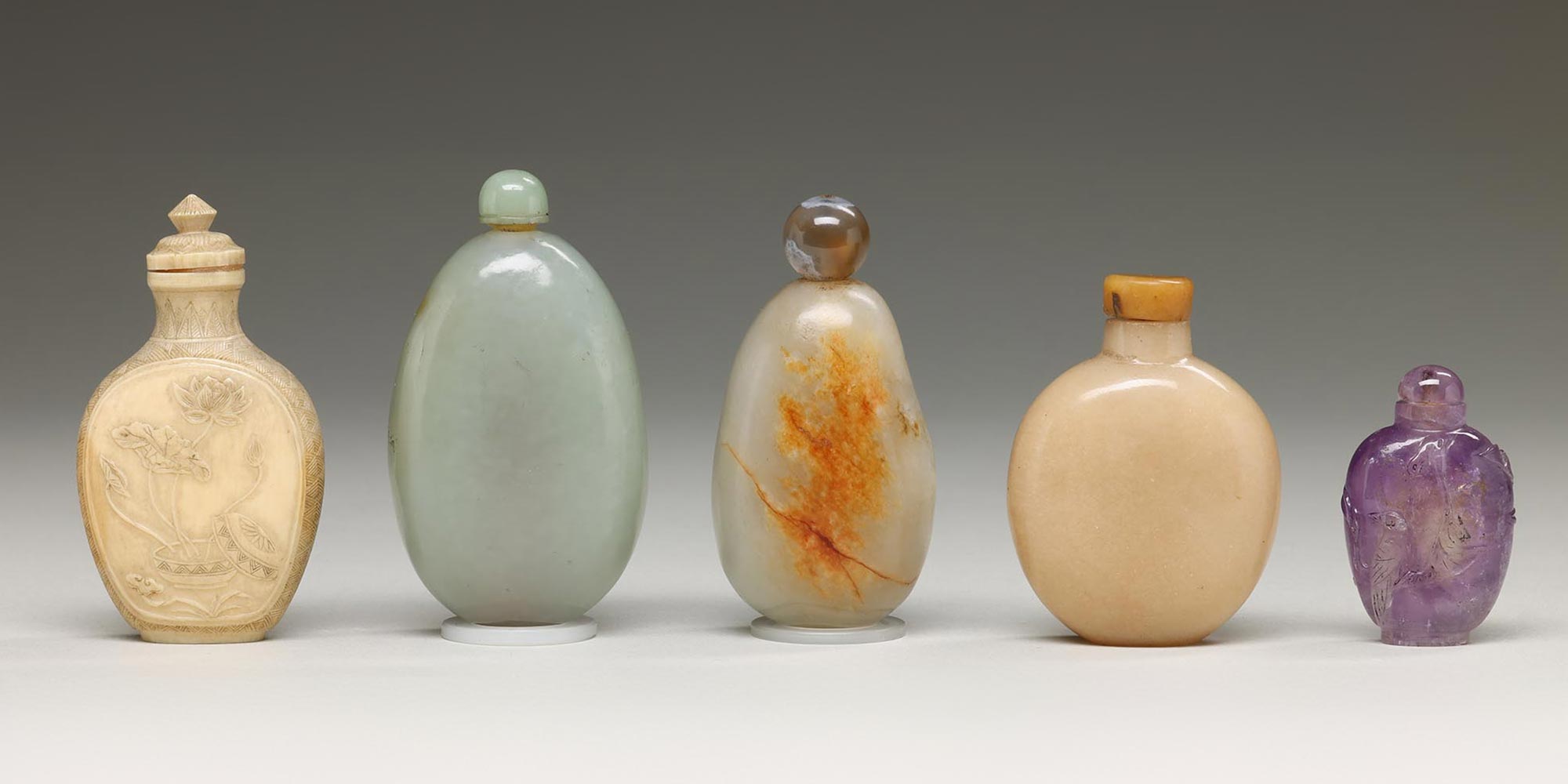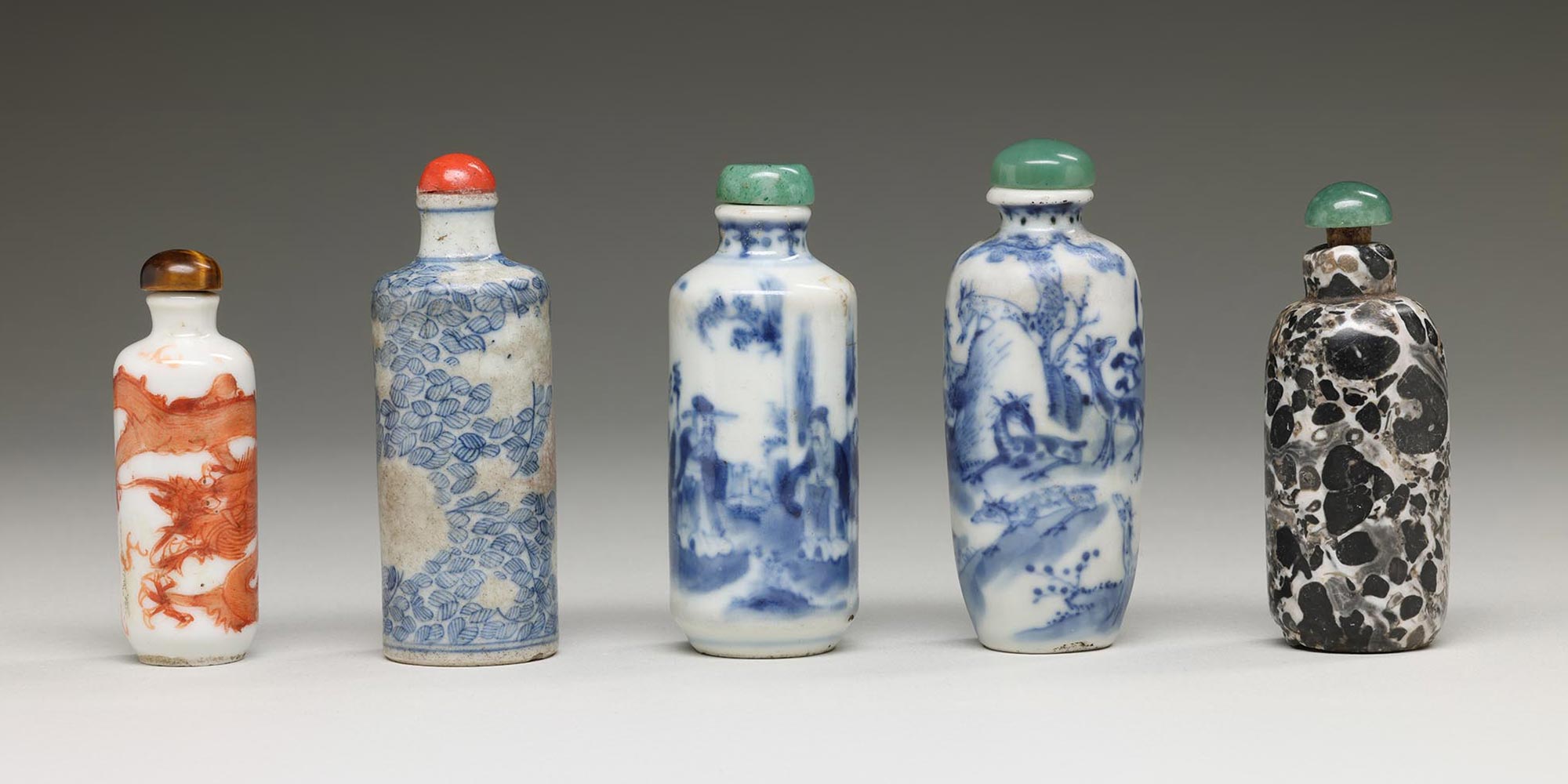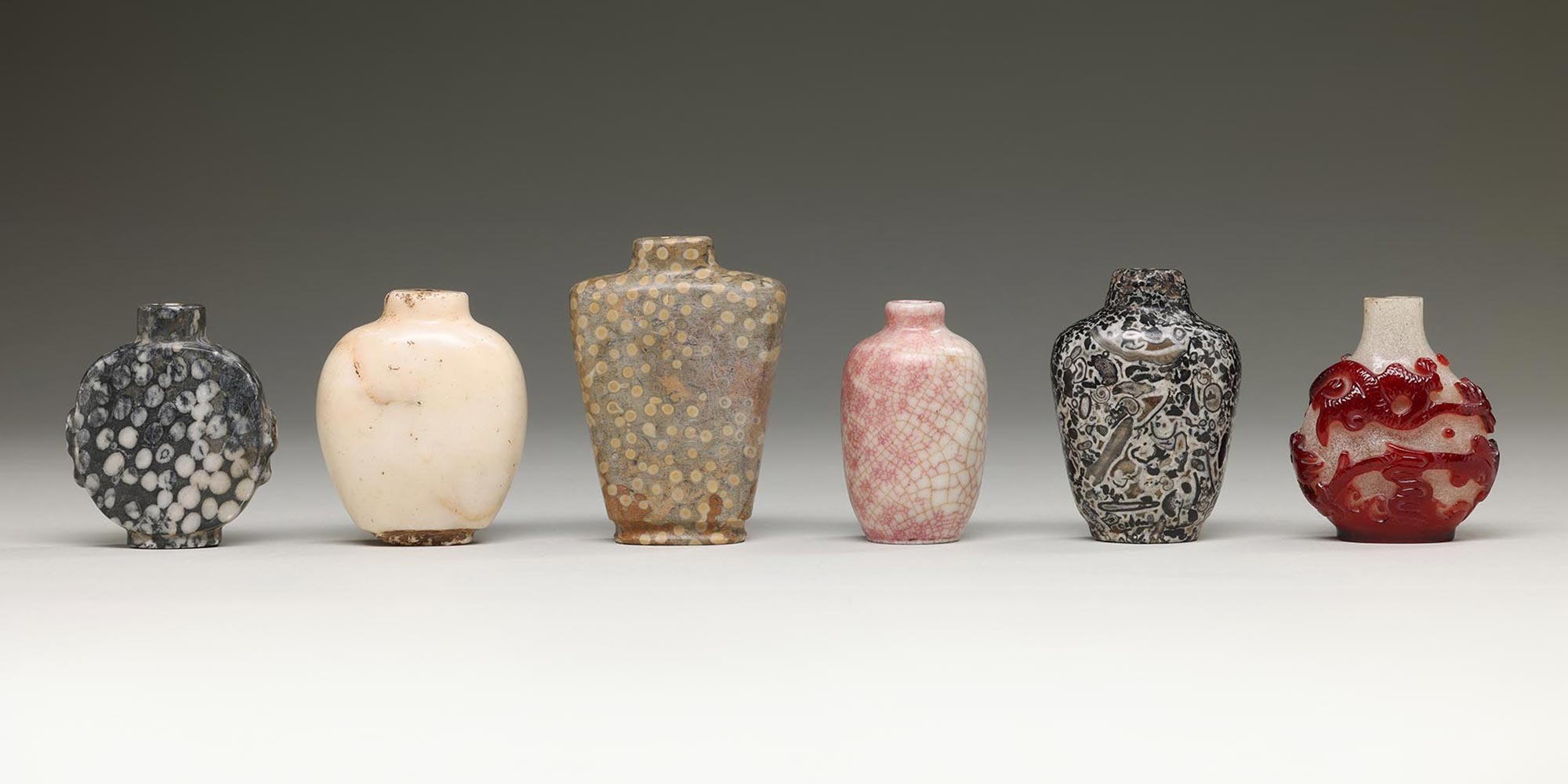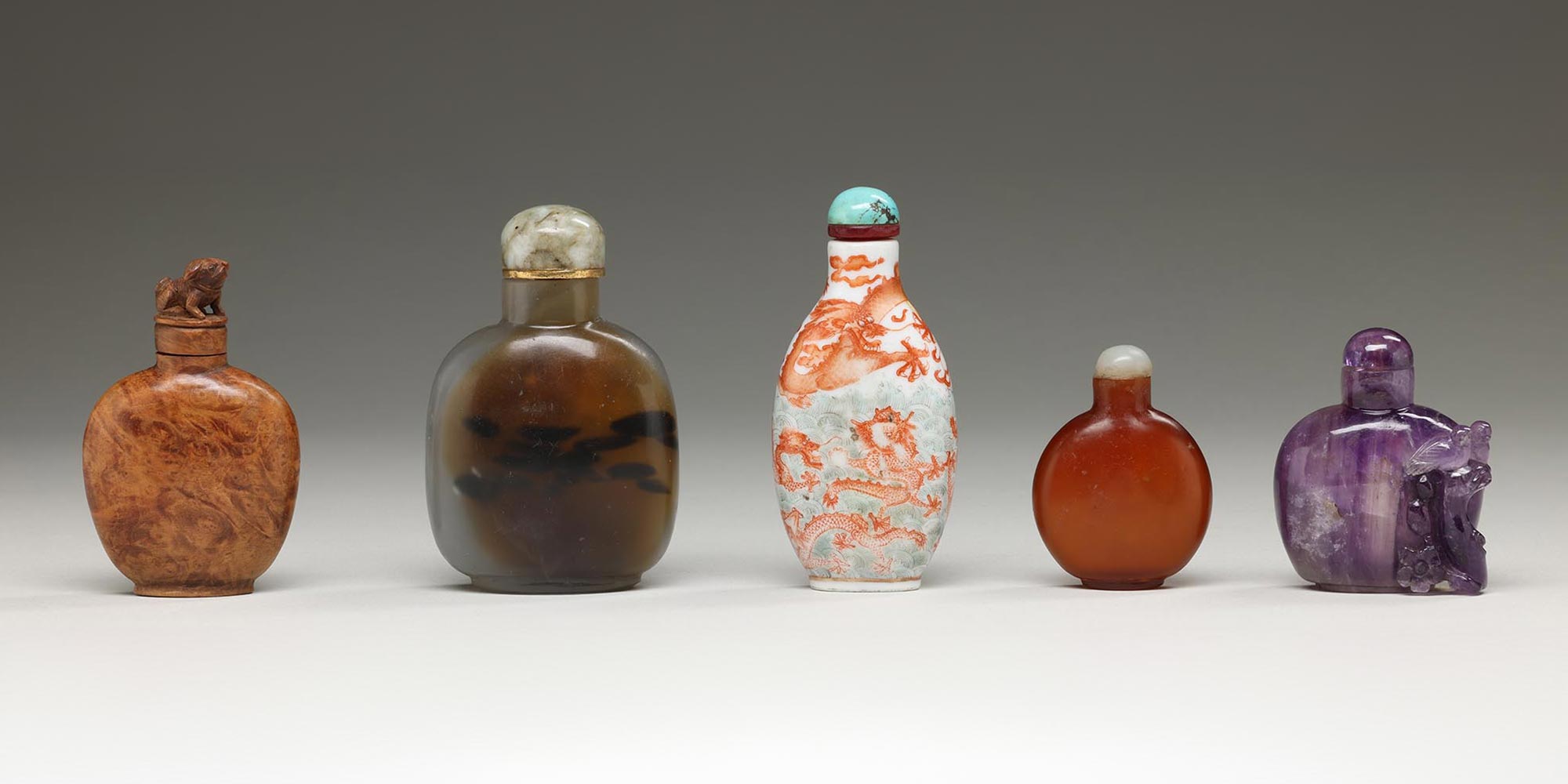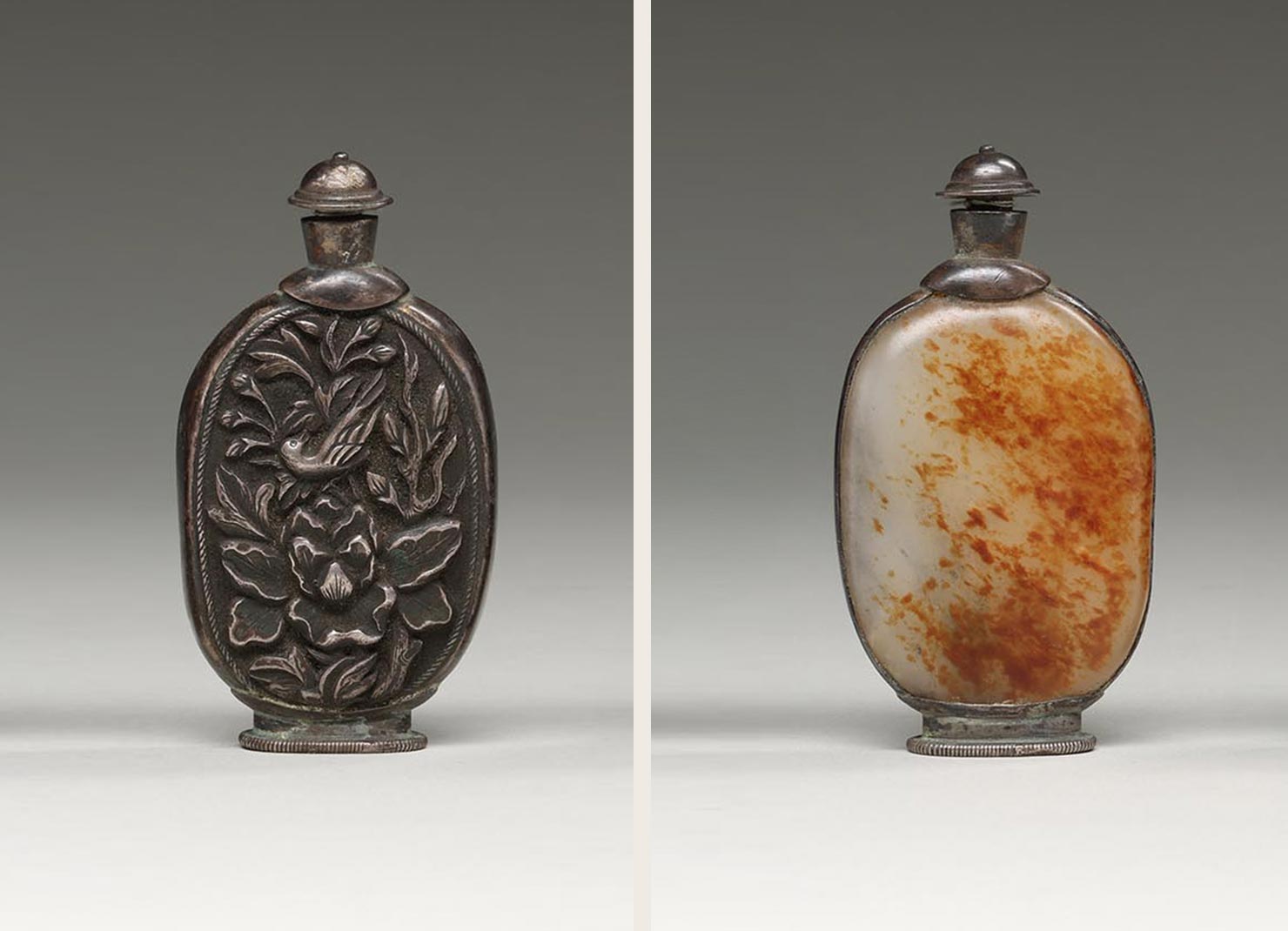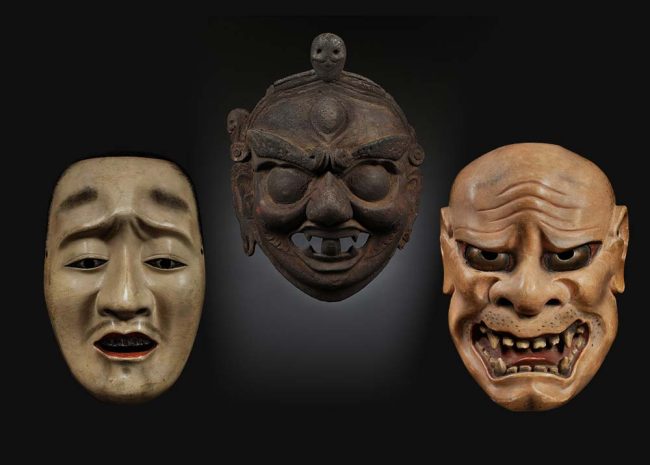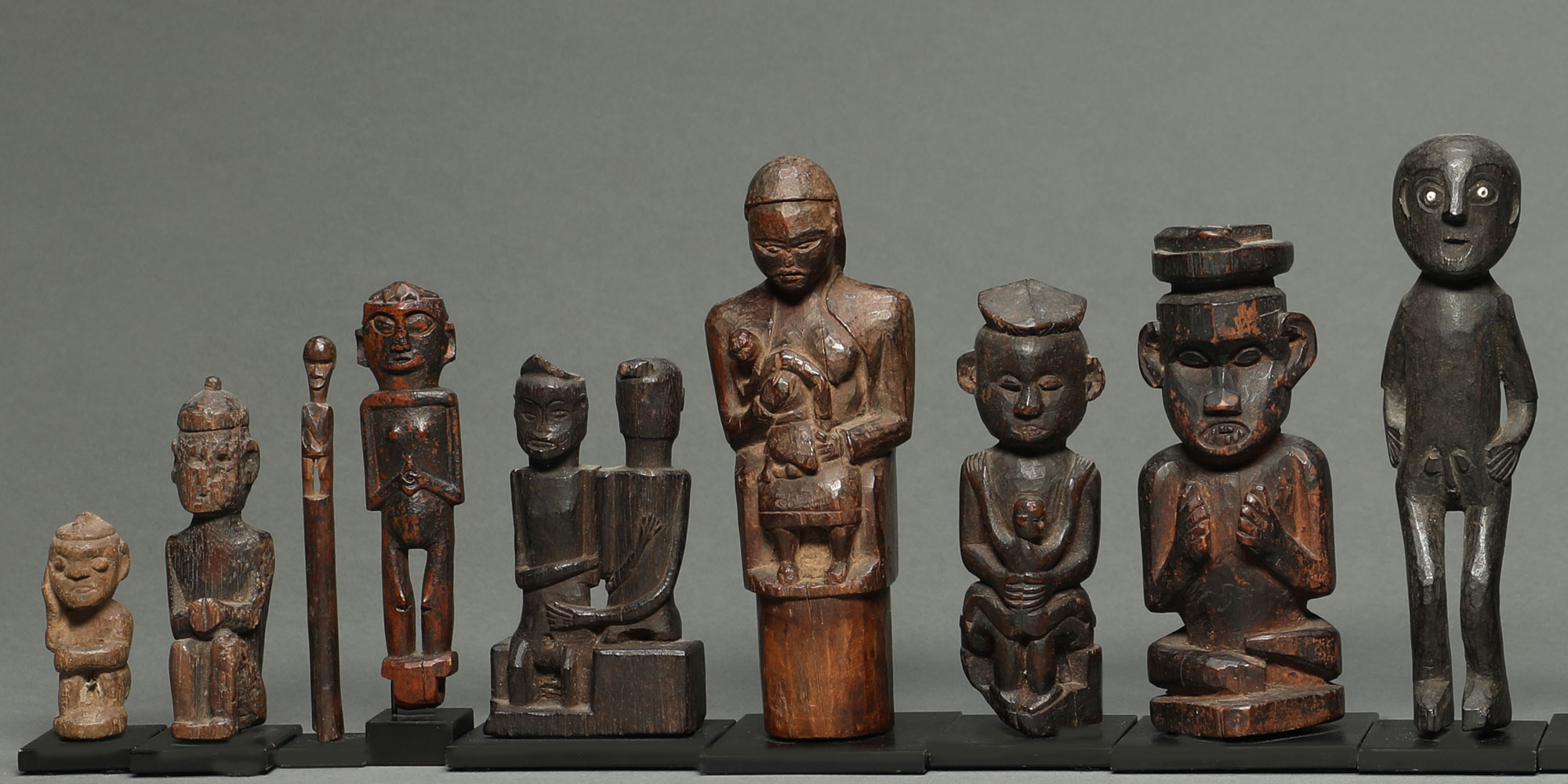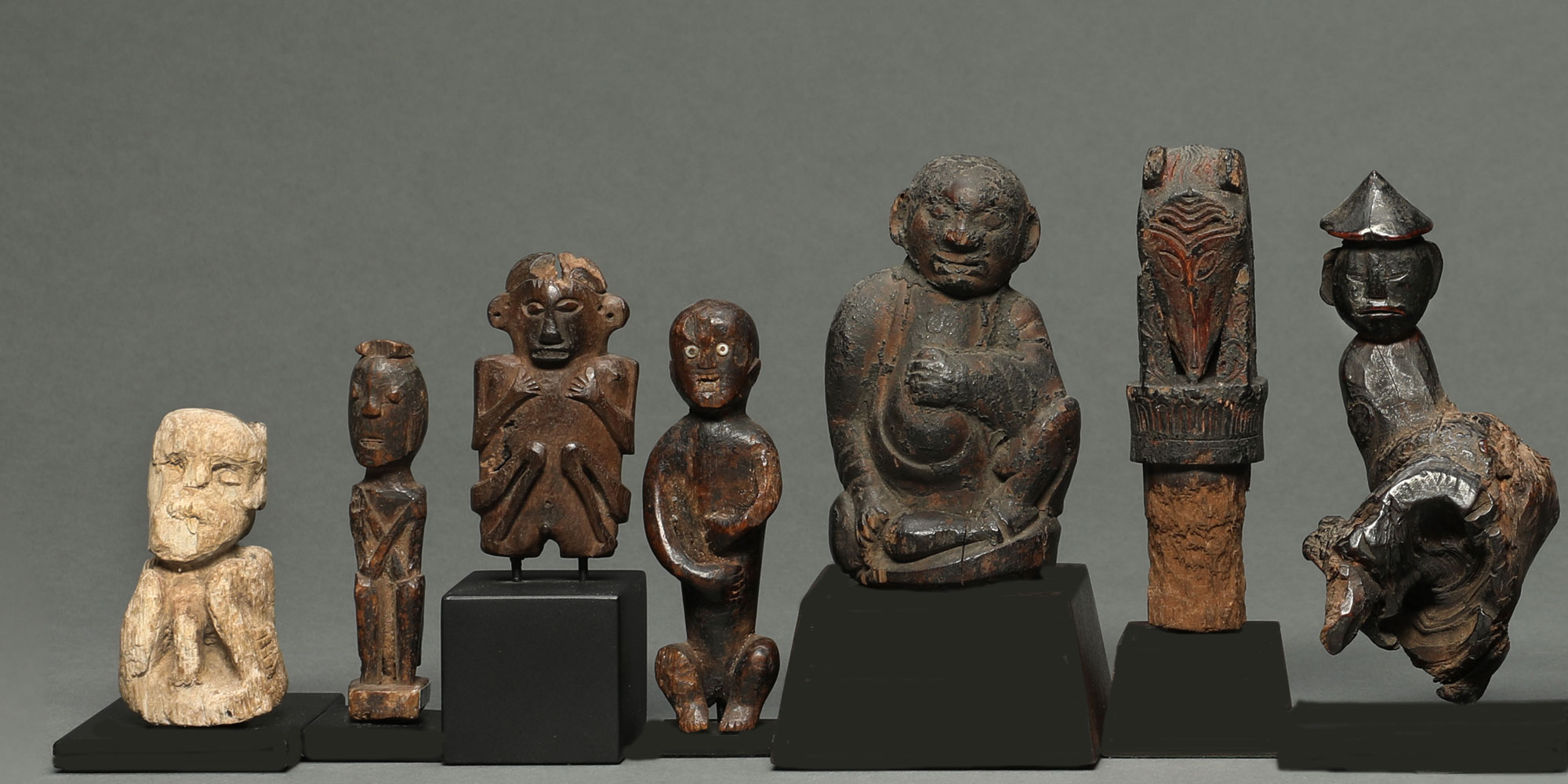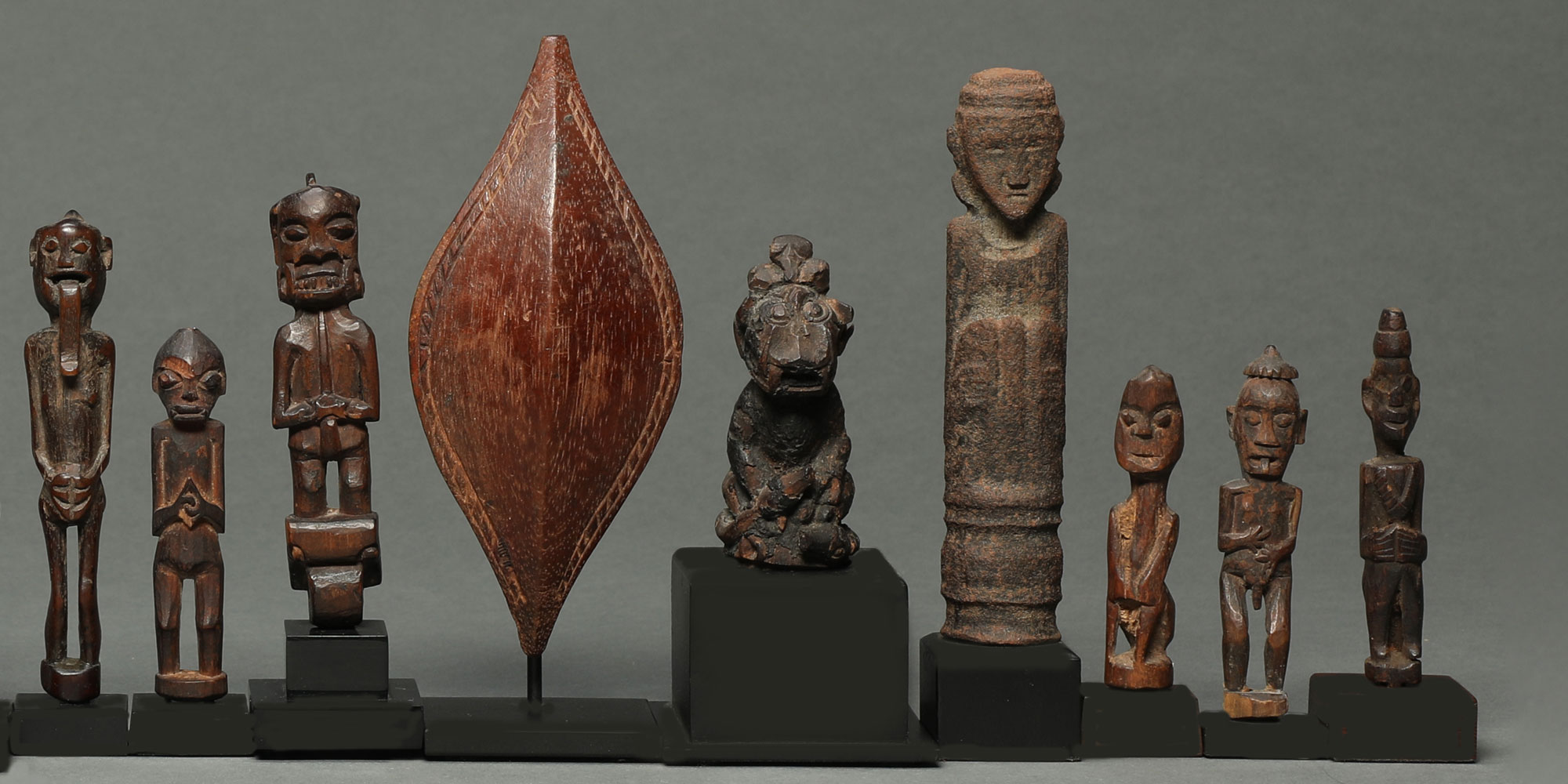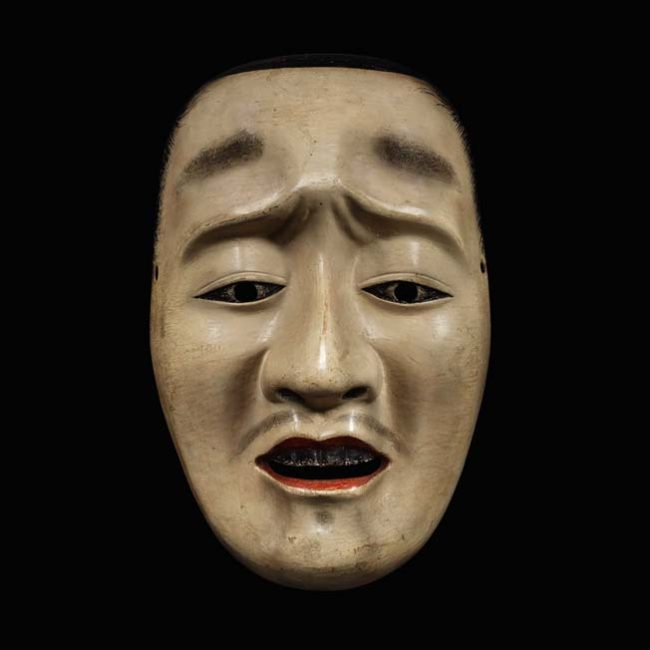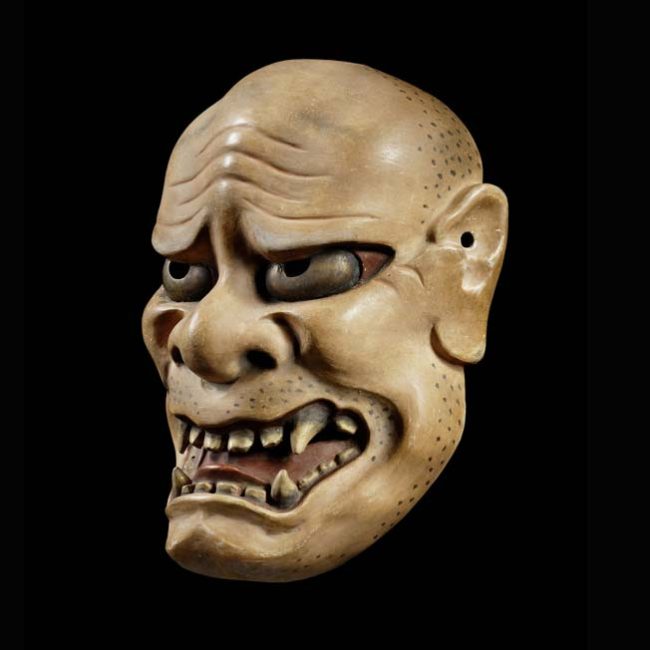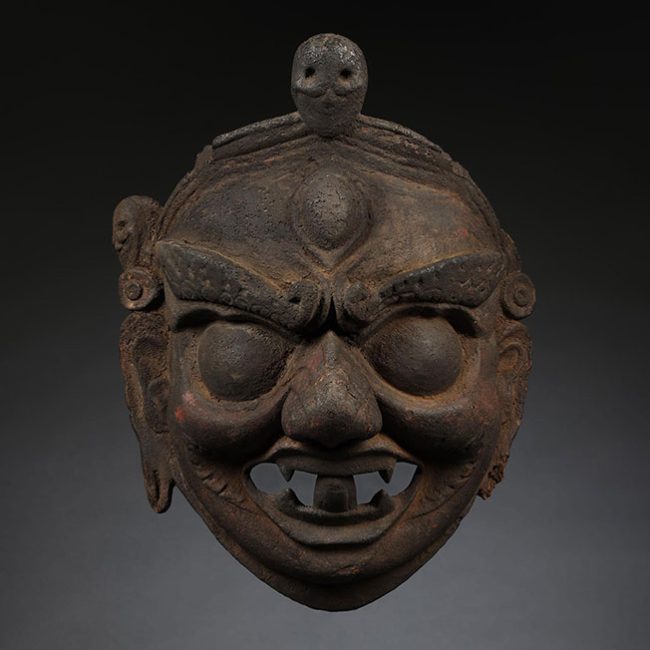Art of the Pacific Rim
We are pleased to present a rare and exquisite collection of select objects from across the globe. Highlights include two stunning ship Palepai; Fijian war clubs Fiji, Polynesia, probably early voyager period, circa 1830; Java Mask; Charming canopa votive containers from Peru. See the collection in person in Santa Fe, August 8-11
June 2025 Collection
Rare Objects and Textiles
We are pleased to present a rare and exquisite collection of 18 objects from across the globe. Highlights include a powerful Korwar sculpture and magic stick charms from Western New Guinea; Batak guardian figures and Nias ancestor figures; Fijian war clubs; a charming alpaca head ceramic and finely woven textiles from pre-Columbian Peru, some dating as early as 543 BC-121 AD.
February 22-28, 2025
VIRTUAL SHOW
In the recent publication, Textiles of Indonesia, Valerie Hector informs us that shells have been used in Southeast Asia as both ornament and currency for Millenia. Oliva shell beads were found in an archaeology site of Timor dating to circa 35,000 years ago and Nassarius shell beads were found in the same area dating to 4500 BCE.
Despite the emergence of the glass trade bead industry some two thousand years ago, hand fashioned shell disks continued to serve as a primary way of storing value and signaling prestige up through the 20th century for many ethnic groups of Southeast Asia and Oceania. This was owing to the extraordinary labor intensiveness in shell bead creation, and the principle that the further from the sea, the greater the value for all artifacts made from shell.
This small exhibition features shell artwork from some of the most legendary headhunting peoples of Asia,
including the greatest shell-decorated garment in the world from the Atayal of Taiwan; a blouse decorated with mother of pearl shell beads from the B’laan of Mindanao, Philippines; an early warrior’s cape from the Naga with appliqued cowrie shells, making a human figure amid circles; and an extraordinary Naga necklace fashioned from giant clam, both from the northeastern highlands of India.
It is a pleasure to share this deeply meaningful group with you!
Album of Famed Textiles
Album of Famed Textiles, Meibutsugire, associated with the Tea Ceremony
Indian Trade Cloth to the Japanese Taste. 17th–18th c.
Album assembled in the early 20th c.
Plain weave cotton painted and block printed, mordant and resist-dyed some with applied gold and silver.
Book Open 191 x 8.5 in
Book Closed 12 x 8.5 x 2 in
SOLD
Virtual Whitehawk Show
February 22-28, 2025
VIRTUAL SHOW
In the recent publication, Textiles of Indonesia, Valerie Hector informs us that shells have been used in Southeast Asia as both ornament and currency for Millenia. Oliva shell beads were found in an archaeology site of Timor dating to circa 35,000 years ago and Nassarius shell beads were found in the same area dating to 4500 BCE.
Despite the emergence of the glass trade bead industry some two thousand years ago, hand fashioned shell disks continued to serve as a primary way of storing value and signaling prestige up through the 20th century for many ethnic groups of Southeast Asia and Oceania. This was owing to the extraordinary labor intensiveness in shell bead creation, and the principle that the further from the sea, the greater the value for all artifacts made from shell.
This small exhibition features shell artwork from some of the most legendary headhunting peoples of Asia,
including the greatest shell-decorated garment in the world from the Atayal of Taiwan; a blouse decorated with mother of pearl shell beads from the B’laan of Mindanao, Philippines; an early warrior’s cape from the Naga with appliqued cowrie shells, making a human figure amid circles; and an extraordinary Naga necklace fashioned from giant clam, both from the northeastern highlands of India.
It is a pleasure to share this deeply meaningful group with you!
Santa Fe 2024
August 9-12, 2024
Santa Fe Community Civic Center
201 W Marcy St
Santa Fe, NM 87501
In the recent publication, Textiles of Indonesia, Valerie Hector informs us that shells have been used in Southeast Asia as both ornament and currency for Millenia. Oliva shell beads were found in an archaeology site of Timor dating to circa 35,000 years ago and Nassarius shell beads were found in the same area dating to 4500 BCE.
Despite the emergence of the glass trade bead industry some two thousand years ago, hand fashioned shell disks continued to serve as a primary way of storing value and signaling prestige up through the 20th century for many ethnic groups of Southeast Asia and Oceania. This was owing to the extraordinary labor intensiveness in shell bead creation, and the principle that the further from the sea, the greater the value for all artifacts made from shell.
This small exhibition features shell artwork from some of the most legendary headhunting peoples of Asia,
including the greatest shell-decorated garment in the world from the Atayal of Taiwan; a blouse decorated with mother of pearl shell beads from the B’laan of Mindanao, Philippines; an early warrior’s cape from the Naga with appliqued cowrie shells, making a human figure amid circles; and an extraordinary Naga necklace fashioned from giant clam, both from the northeastern highlands of India.
It is a pleasure to share this deeply meaningful group with you!
Snuff Bottles Collection
As a boy, I explored nearby ranchlands looking for antique bottles, some of which had turned purple by the sun over the years.
My first trip to Asia began in Hong Kong, the year was 1978. I was inspired by my grandmother Kilkenny, who had a living room full of treasures from China collected in Hong Kong in the 1930s. She encouraged me to look for snuff bottles and silk textiles with ‘forbidden stitch.’ I found myself irresistibly drawn to the snuff bottles in a little antique shop off Nathan Road on the Kowloon side. Almost all of these date to that first trip. And now, after 45 years, I am offering this very appealing collection as a whole.



